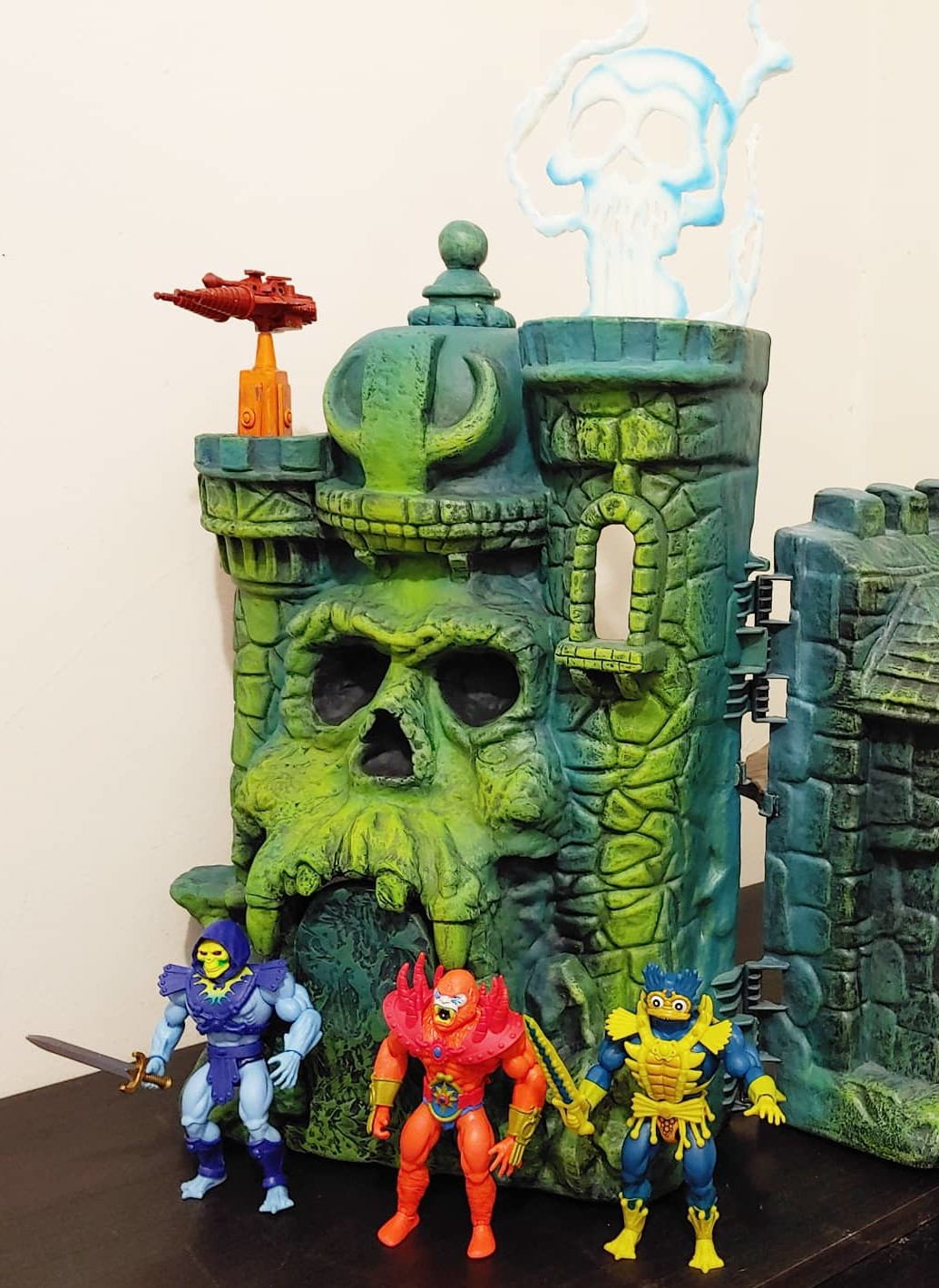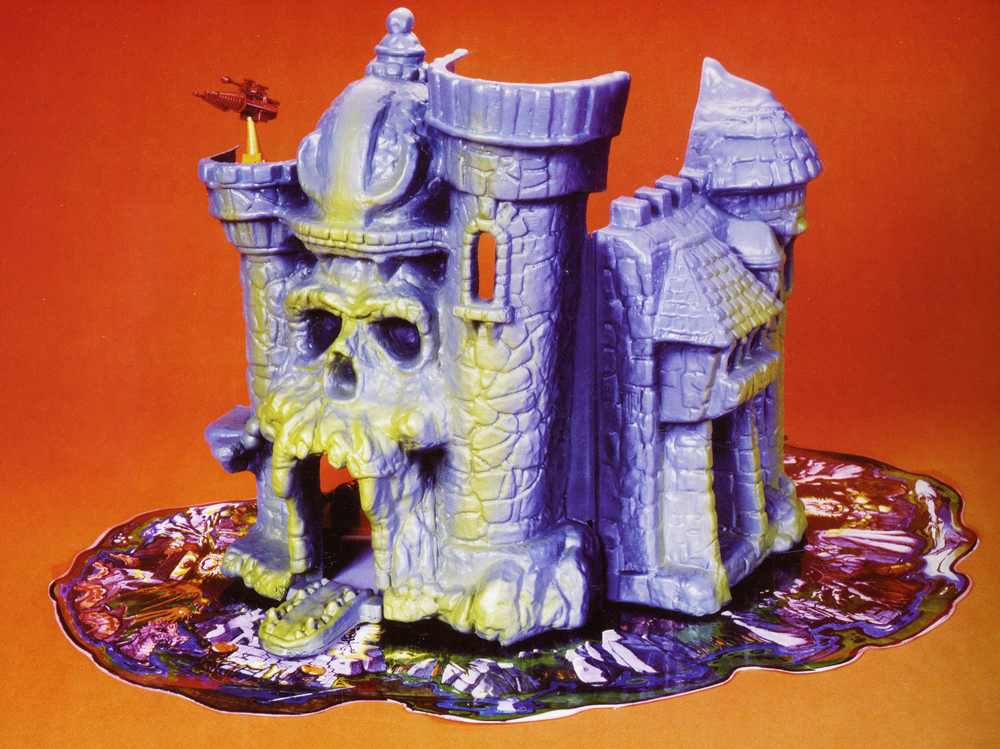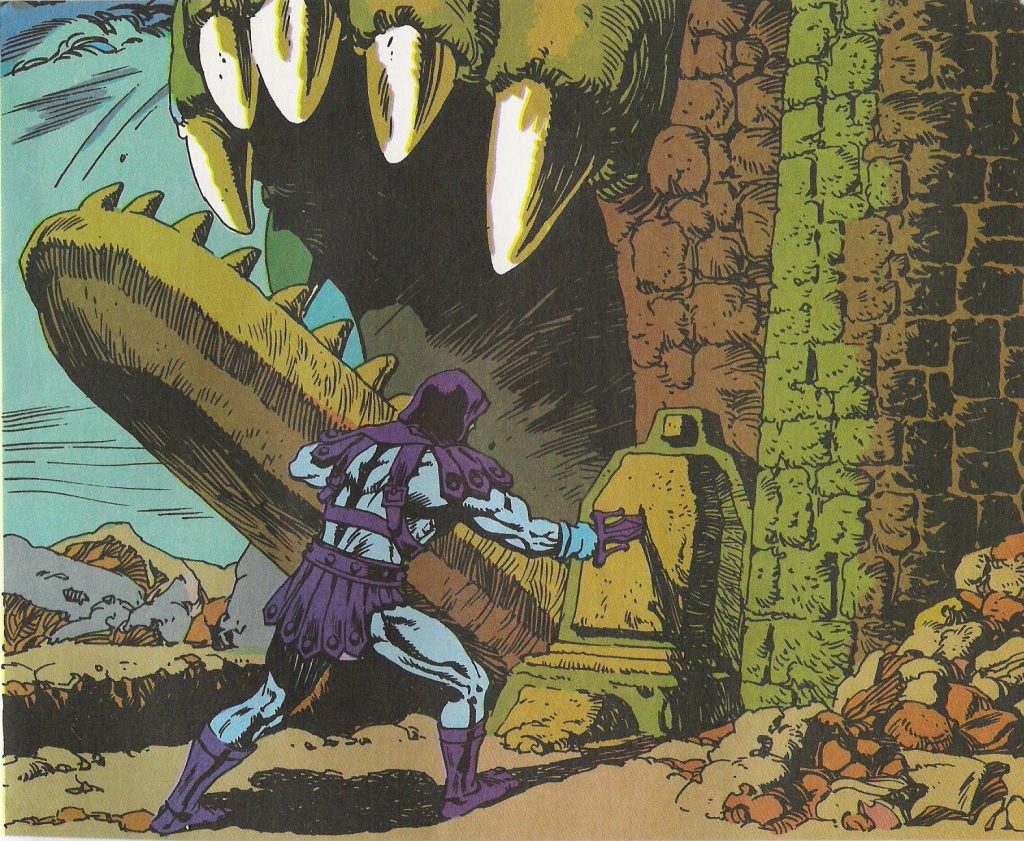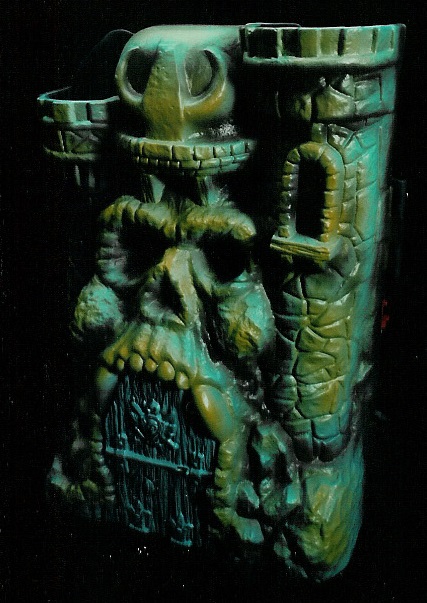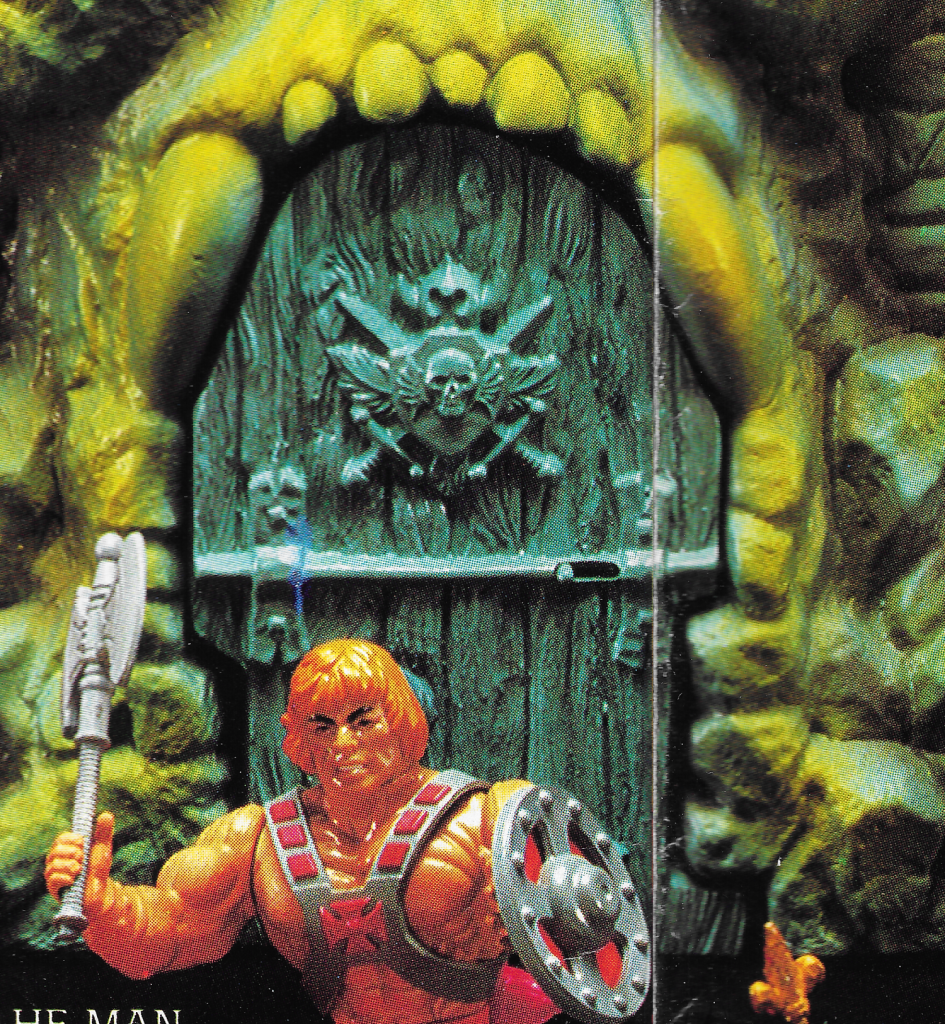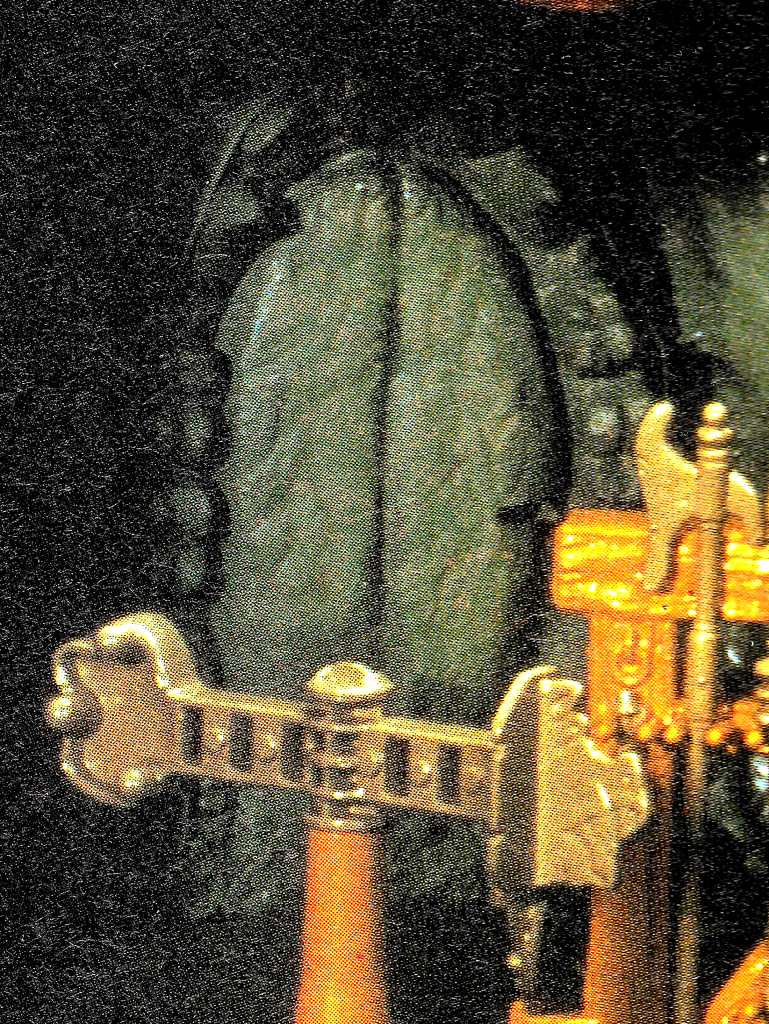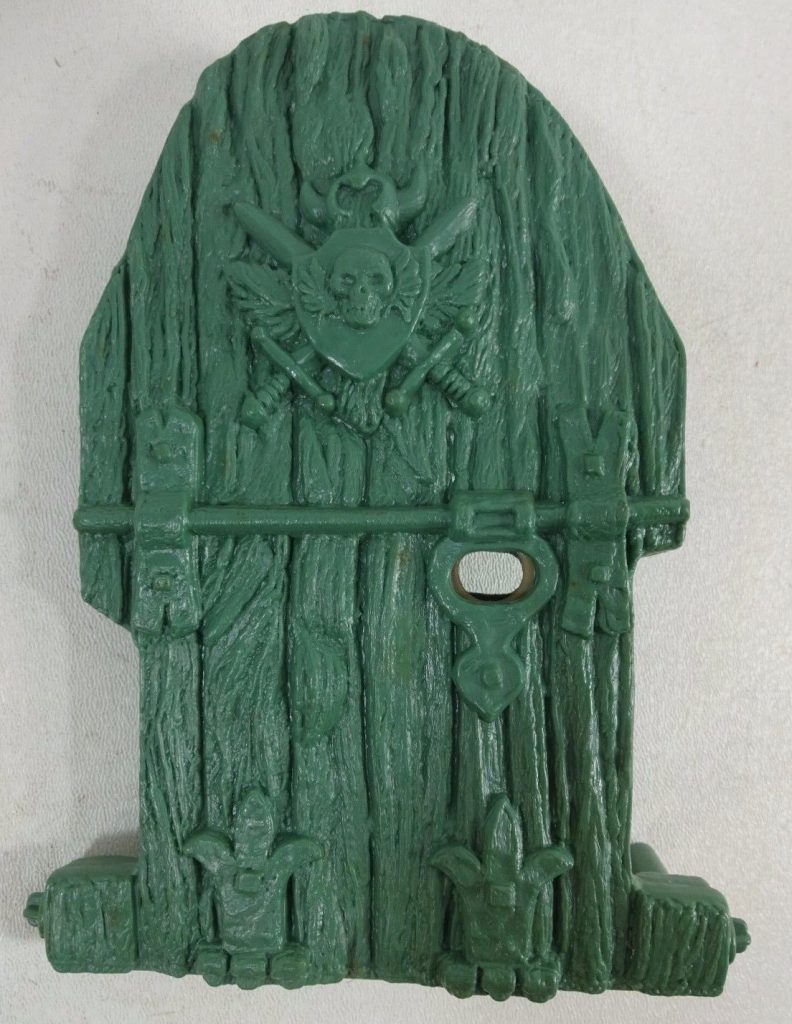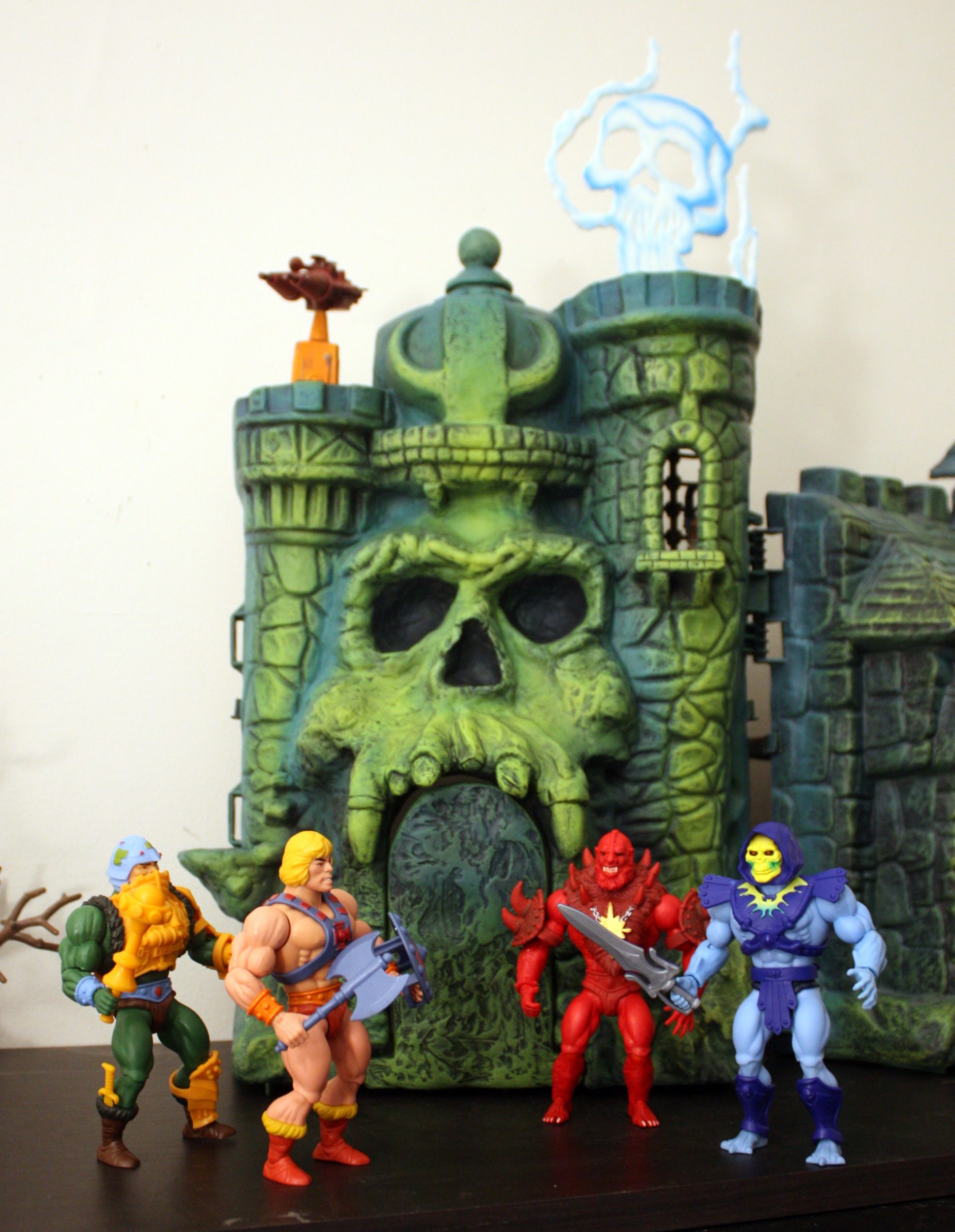
For a couple of years now I’ve been admiring the minicomic-inspired customs of artist Guillermo Grande. What has caught my eye the most, however, is his recreation of the original Mark Taylor prototype Castle Grayskull (as featuring in the first set of Alfredo Alcala-illustrated minicomics and other material), using a combination of newly sculpted pieces and paint work on an existing vintage Castle Grayskull shell. When he created a second one for sale, I had to jump on it right away.
The original Castle Grayskull prototype (designed and sculpted by Mark Taylor) is shown below for reference. You can also check out my article on the prototype for a more detailed discussion of what sets it apart from the mass-produced castle, which was trimmed and simplified to reduce manufacturing costs and to fit it in a smaller box (which would reduce shipping costs and allow more playsets to fit on shelves at retail).



Guillermo of course references that prototype in his custom work, but he also references colors and other unique elements from the illustrations of Alfredo Alcala.

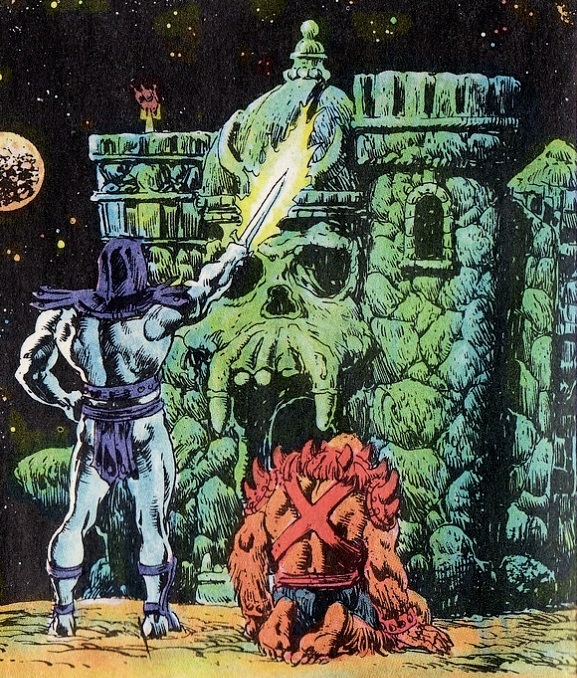
On to the custom!
Exterior
Color-wise, the exterior of Guillermo’s castle seems to invoke the more dramatic and moody color scheme of the Alcala comics, with deep blue shadows in the recesses of the exterior and vivid green on all protruding surfaces, as if lit by some eldritch light. This is of course present on the prototype, but it’s more amplified in Alcala’s artwork.

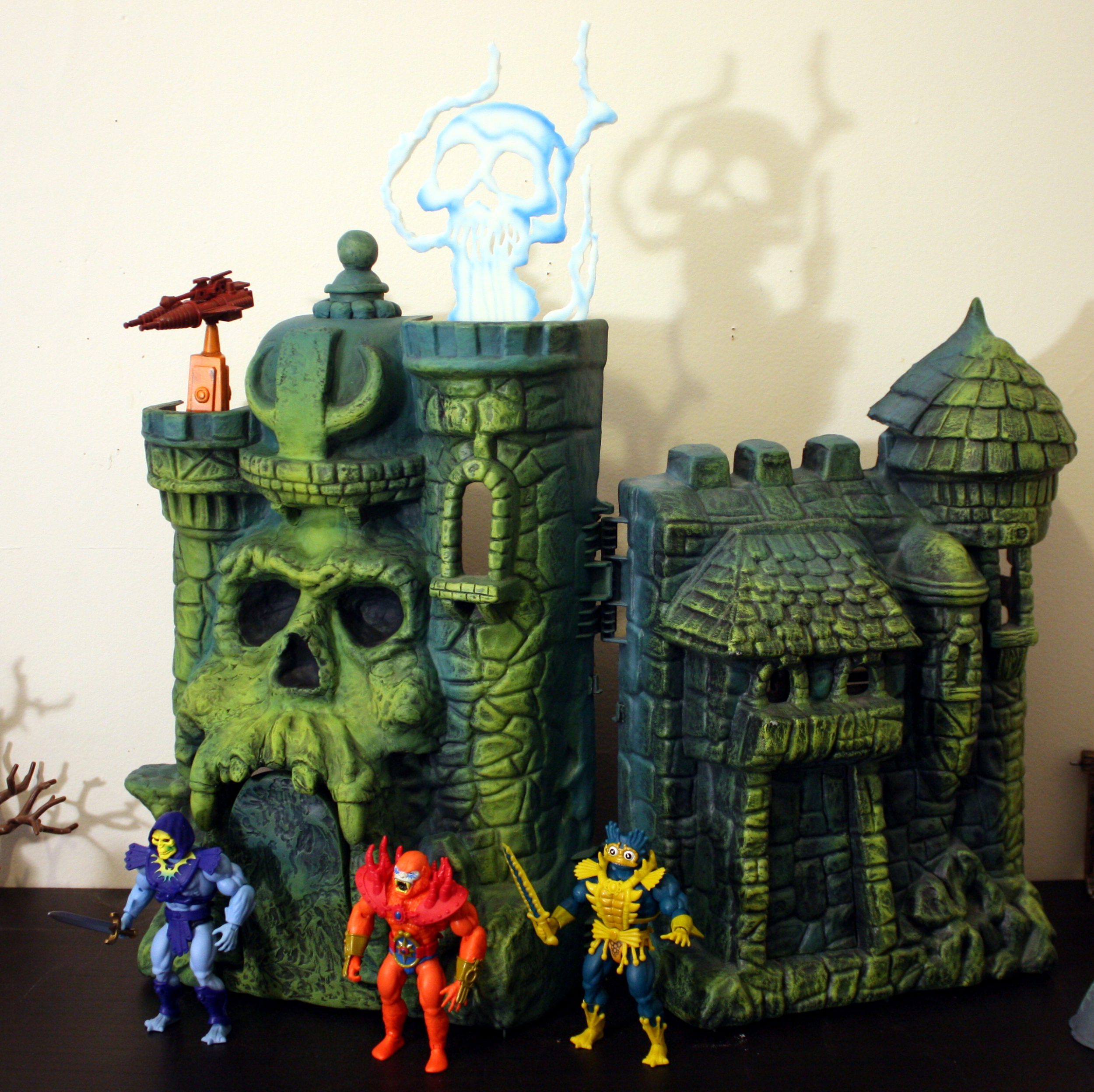
On the front face of the castle, there are quite a few modifications. The most obvious might be the teeth, which are much more ghoulish than the retail castle and have quite a bit of overhang. The teeth ended up being more recessed on the retail version because that was much easier for molding purposes.
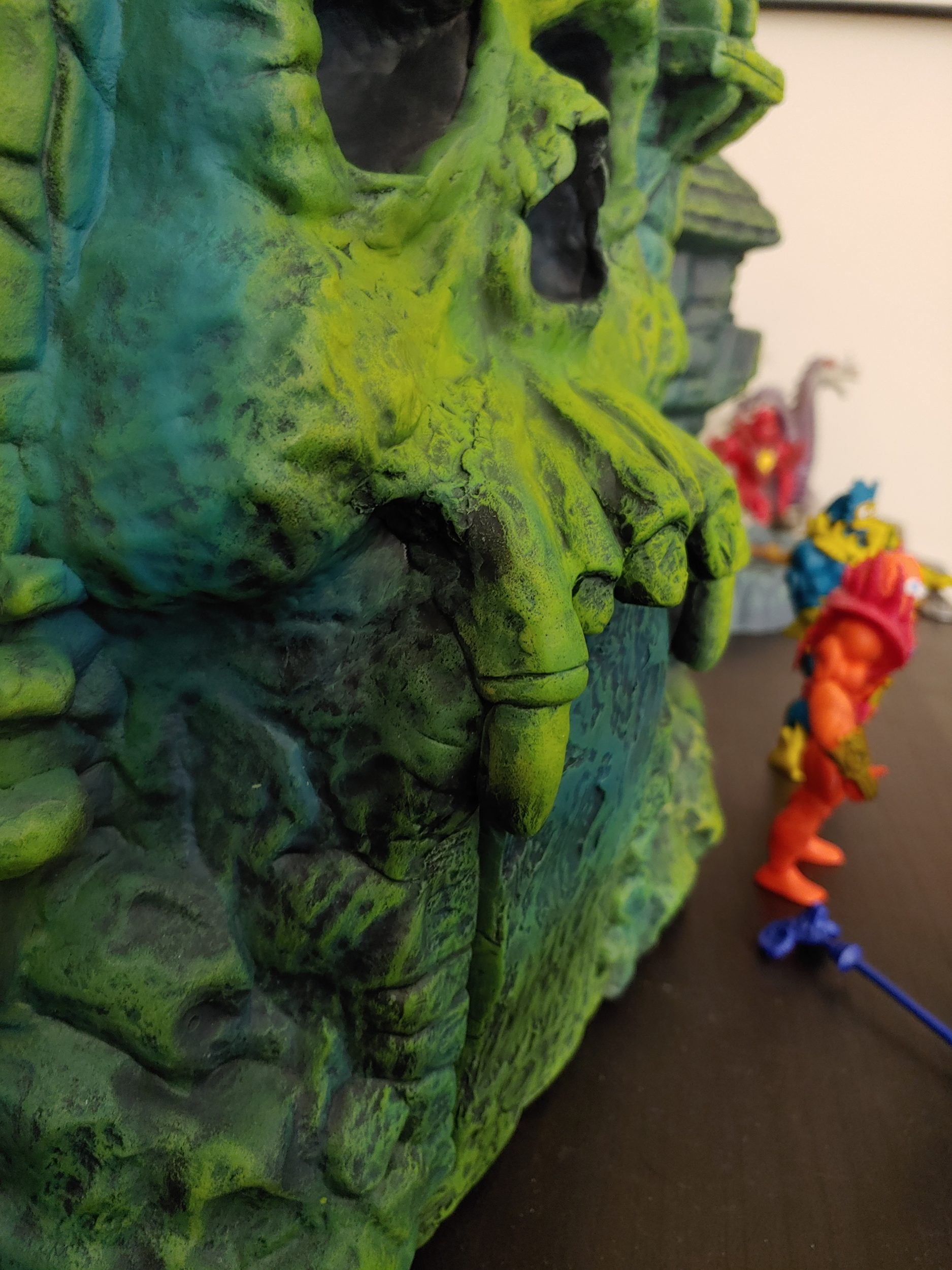
Another key feature is the ledge on the side of the tower:

Another obvious change is the so-called pawn-piece on the top of the helmet. The helmet itself also has an enlarged center design.
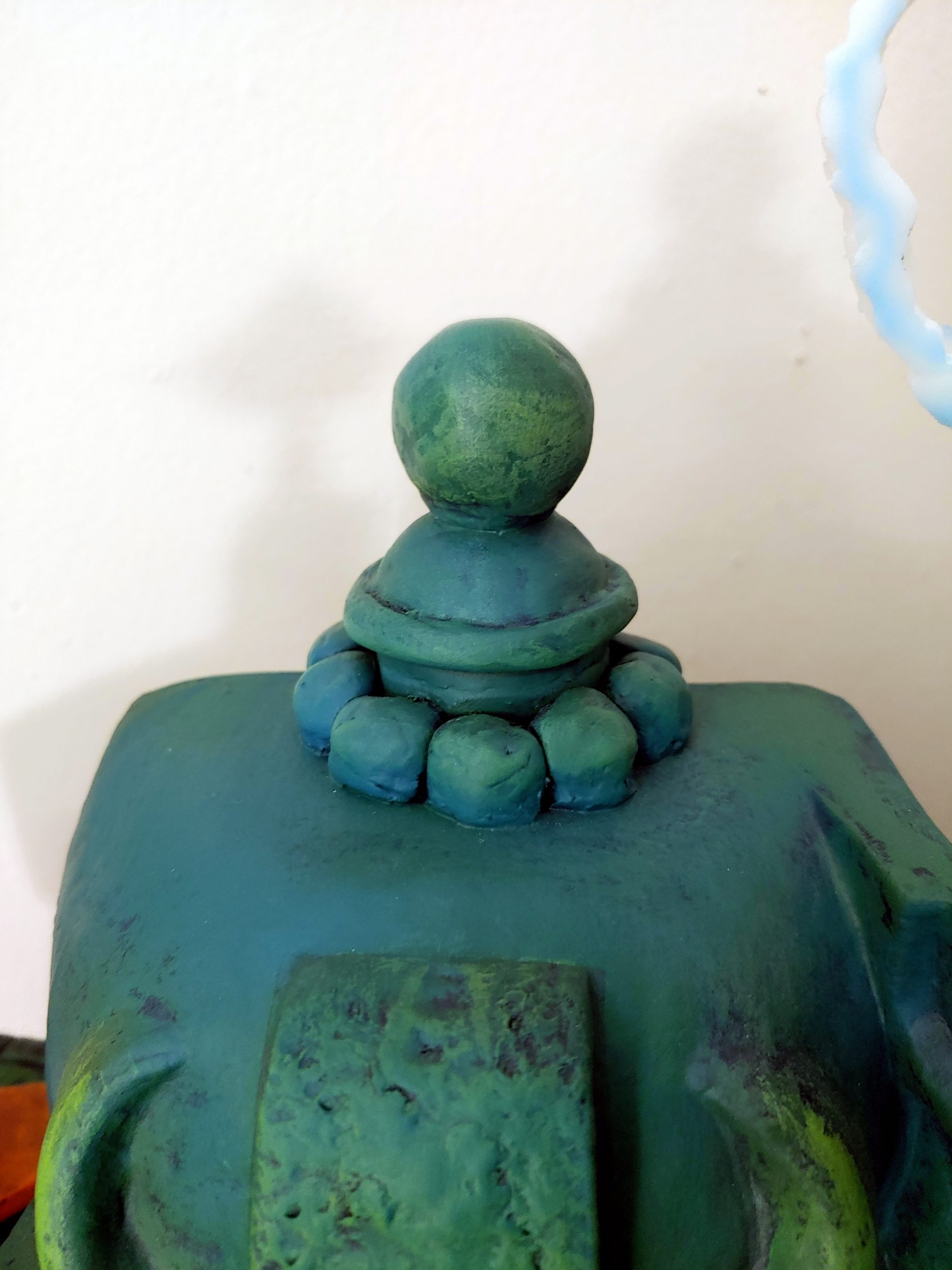
A really ingenious addition to the castle is a completely reworked jawbridge. The retail castle had an enlarged opening with some extra room at the top half of the entrance. The prototype had a narrower front entrance. It also had a stone textured exterior, while the retail jawbridge had a wood texture on the outside. Guillermo has also modified the jabridge teeth to match the prototype (while extending it a bit to completely cover the entrance when closed):
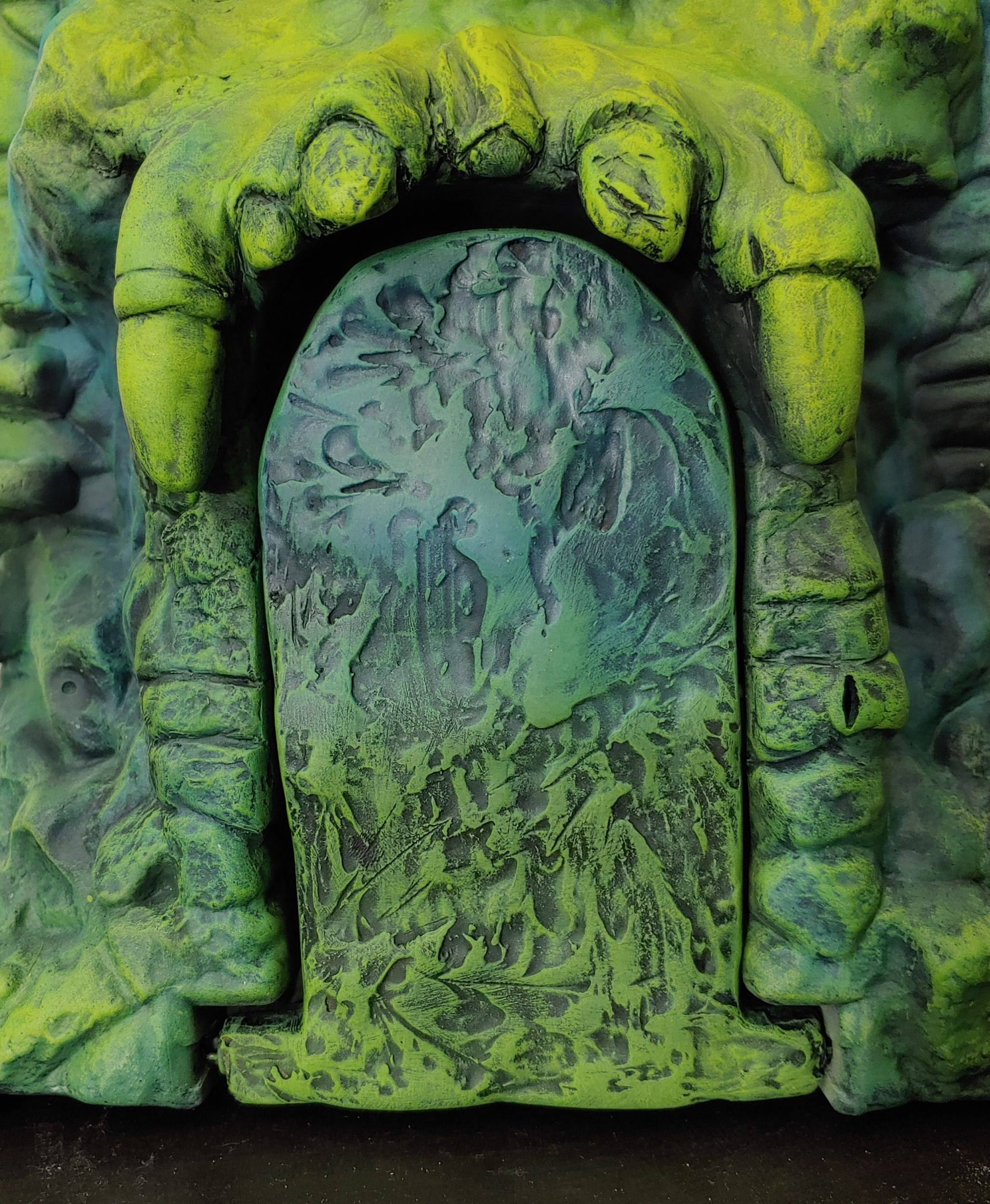
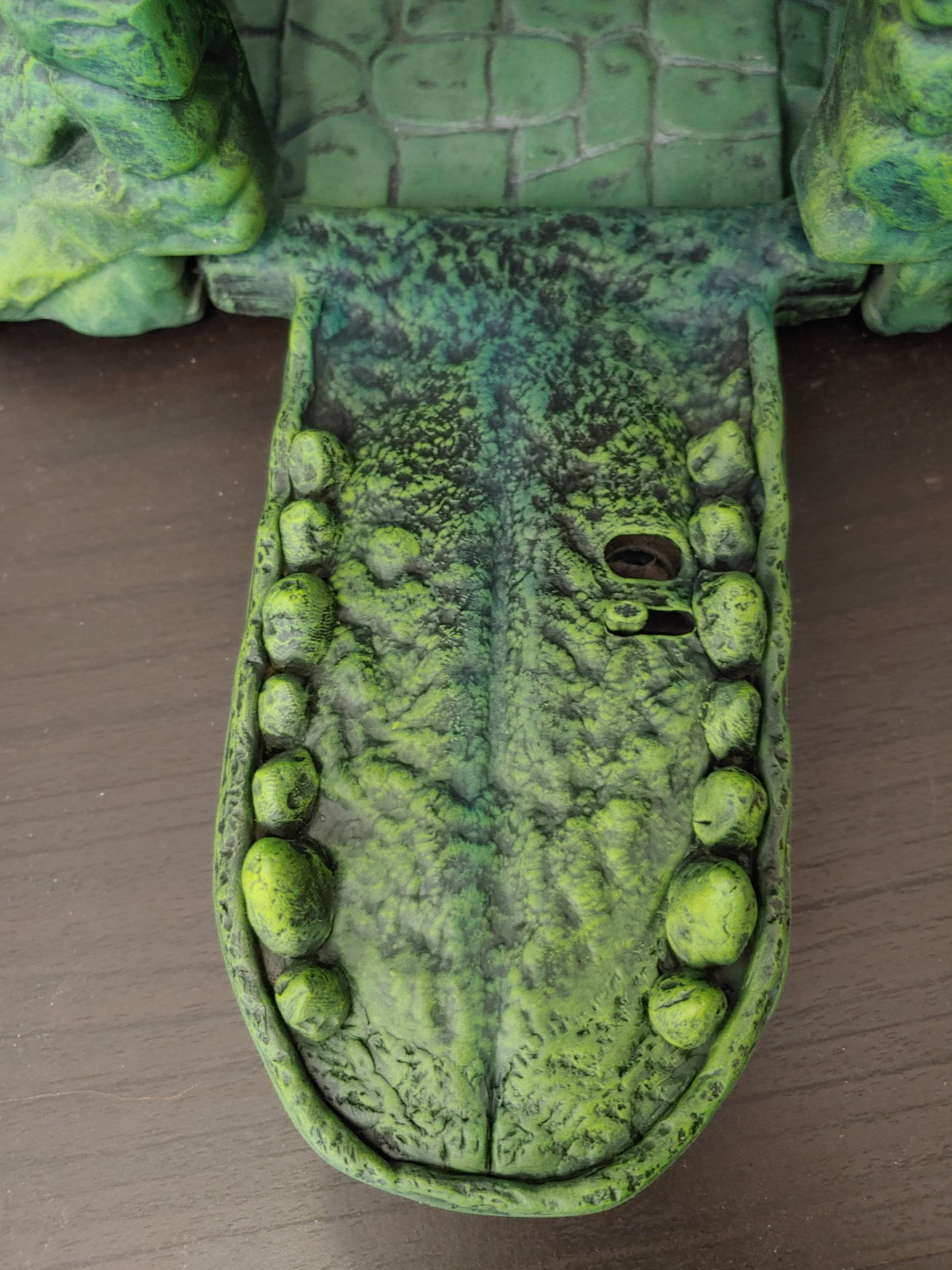
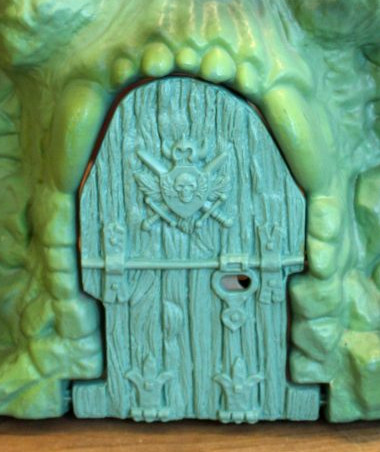
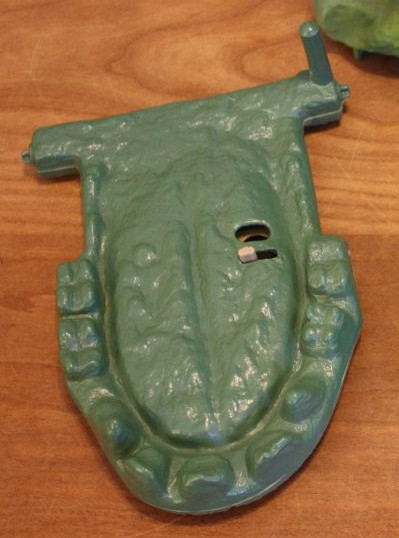
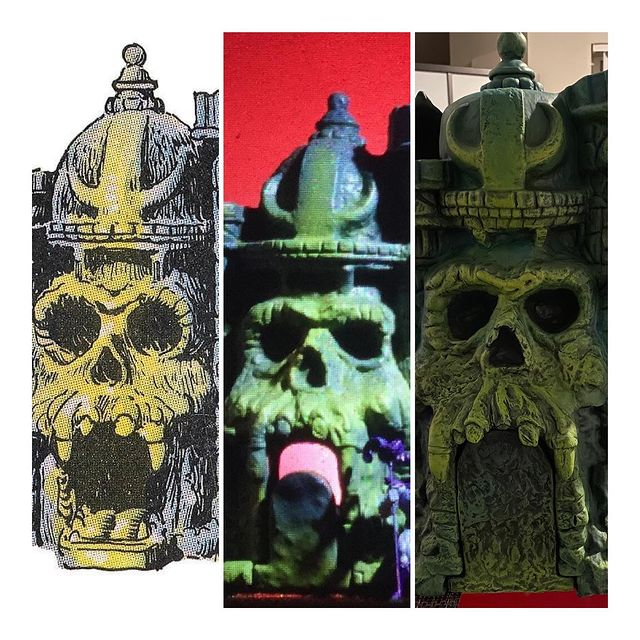
There is also a hole to the side of the door for He-Man or Skeletor to insert their sword – a detail taken from the minicomics. I should note that doing this won’t actually open up the jawbridge – that must be done manually.
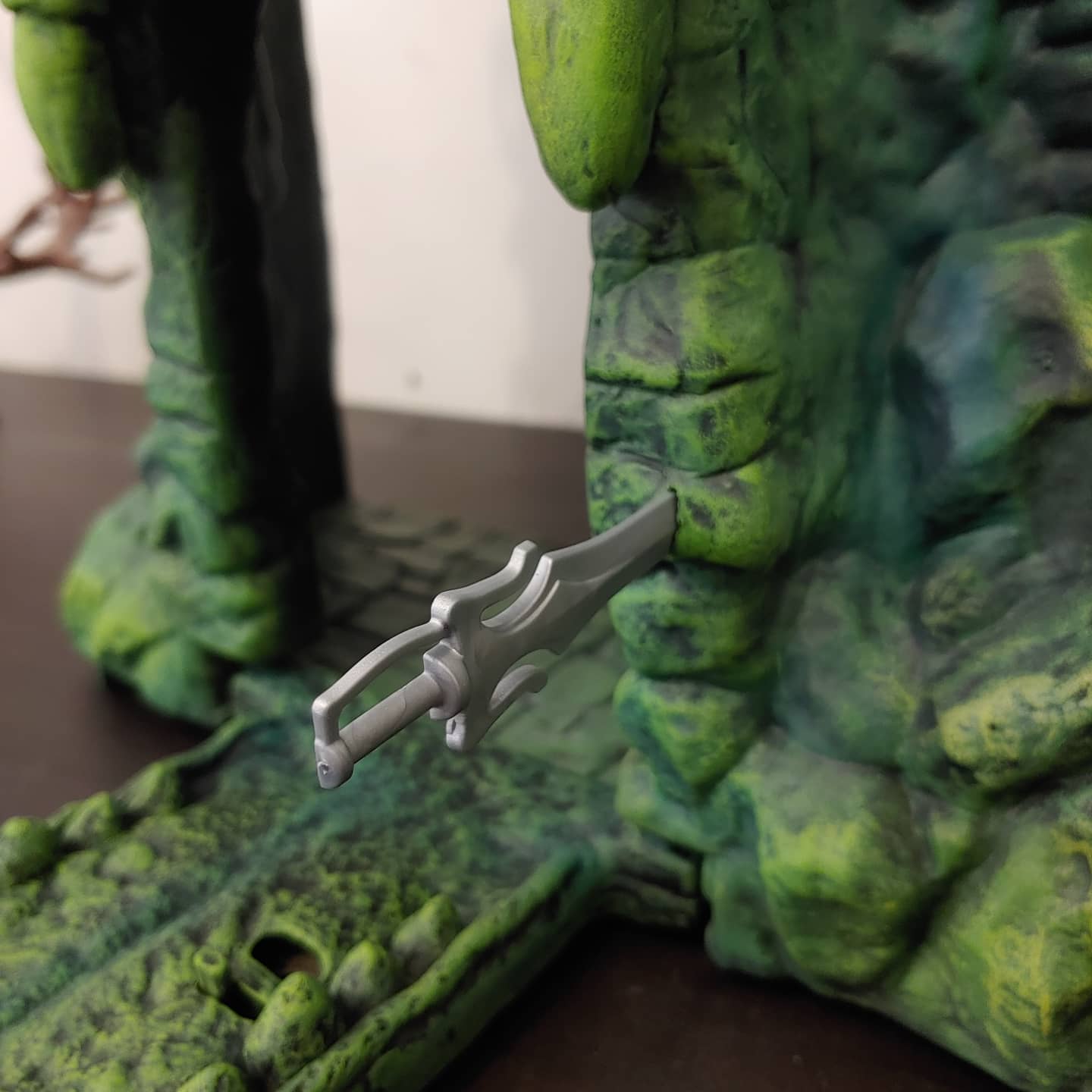

A more subtle change is the addition of extra material between the eyes and around the nose, to better reflect the prototype design:
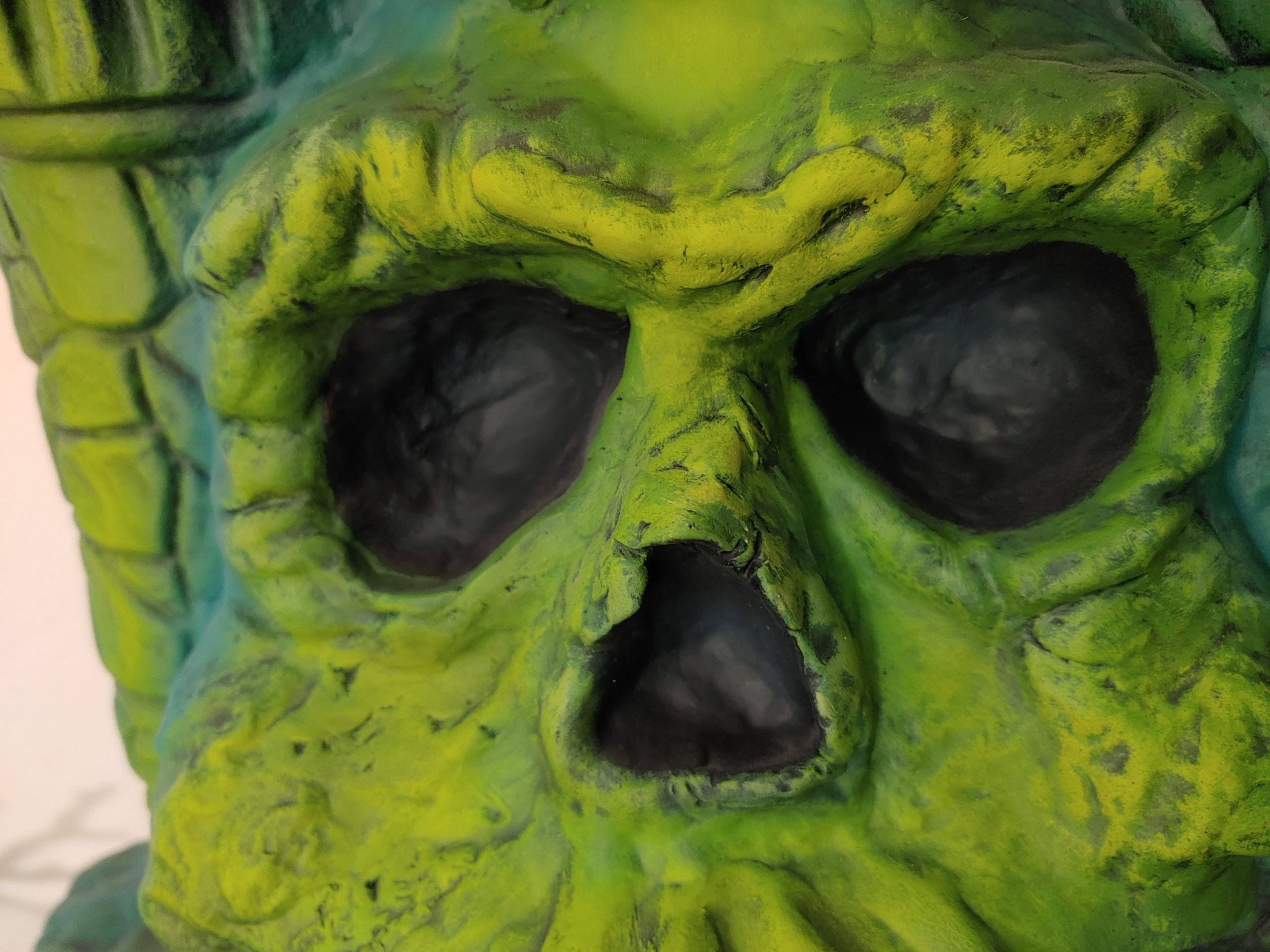
Visible from the front is the concept laser cannon. This one was actually kitbashed by Mark Taylor from Micronauts Hornetroid parts – he later designed something from scratch for the production model. You can see also from this view that Guillermo has included simulated stone floor on the platform.
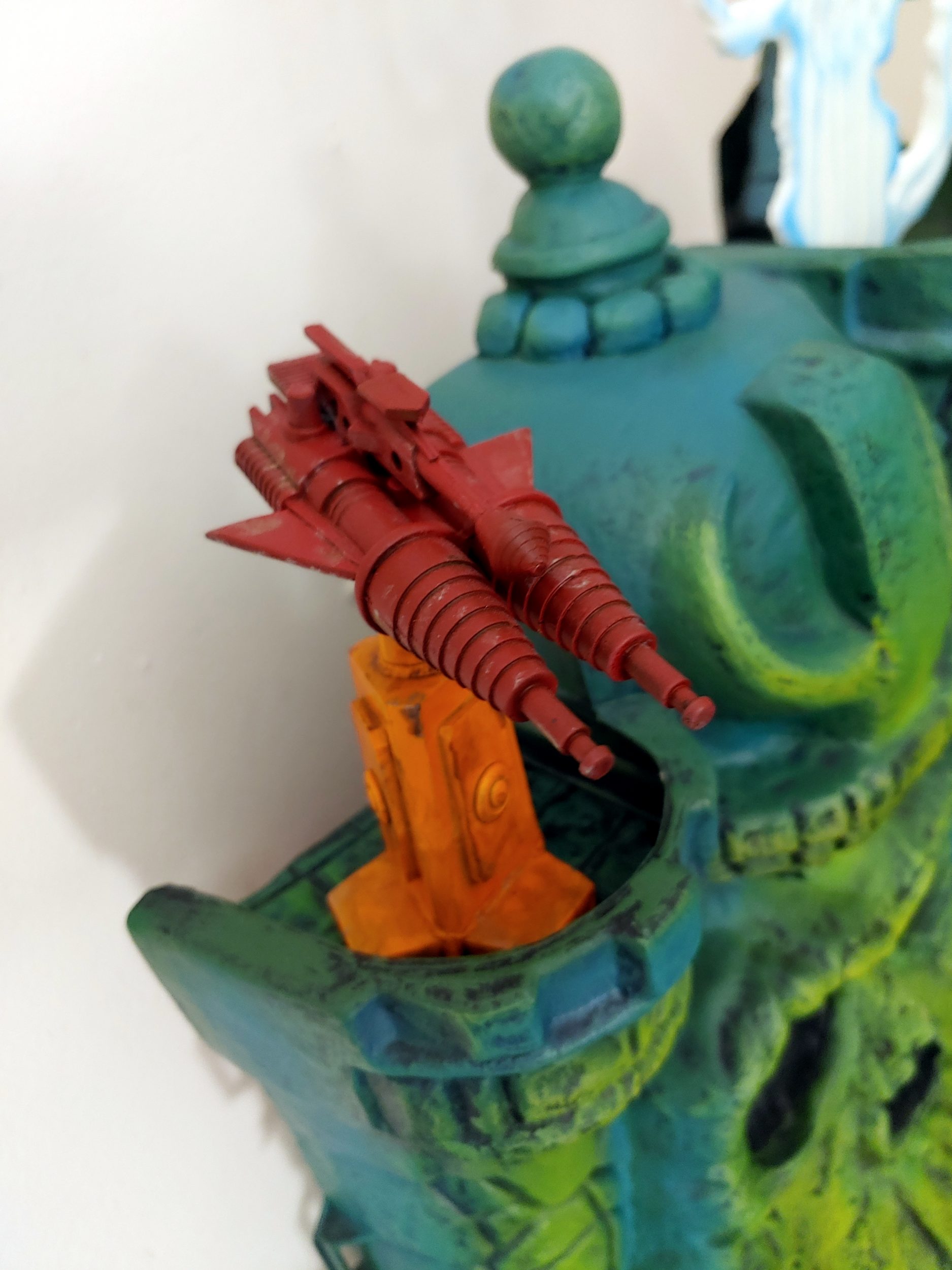

Visible from the front on the taller tower is the “Spirit of the Castle.” This wasn’t from the prototype playset, but it was included at the end of many of the Alfredo Alcala/Don Glut minicomics. The Spirit would appear at the end of the story to deliver a message to the triumphant heroes. The custom “Spirit” glows in the dark.
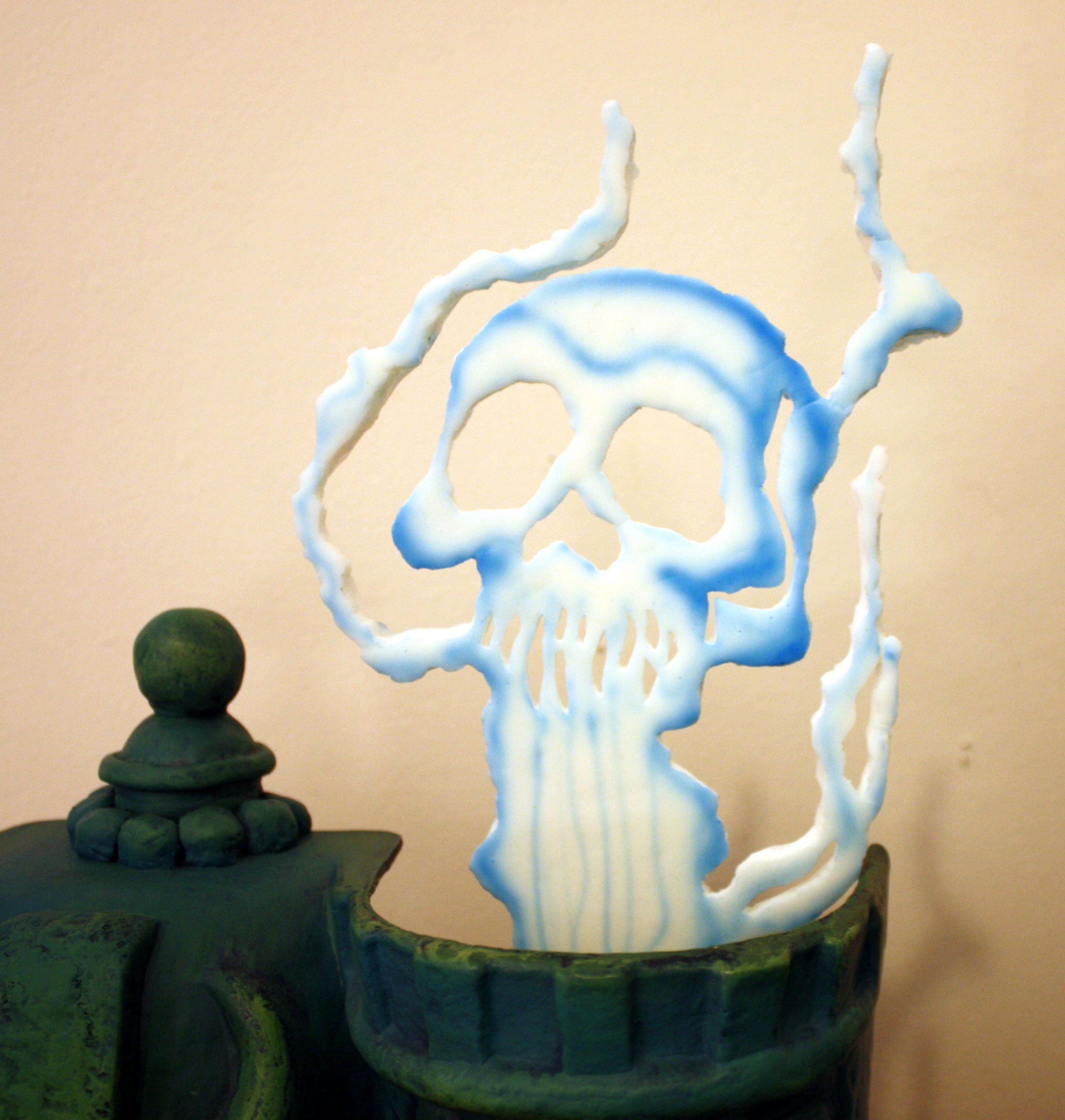
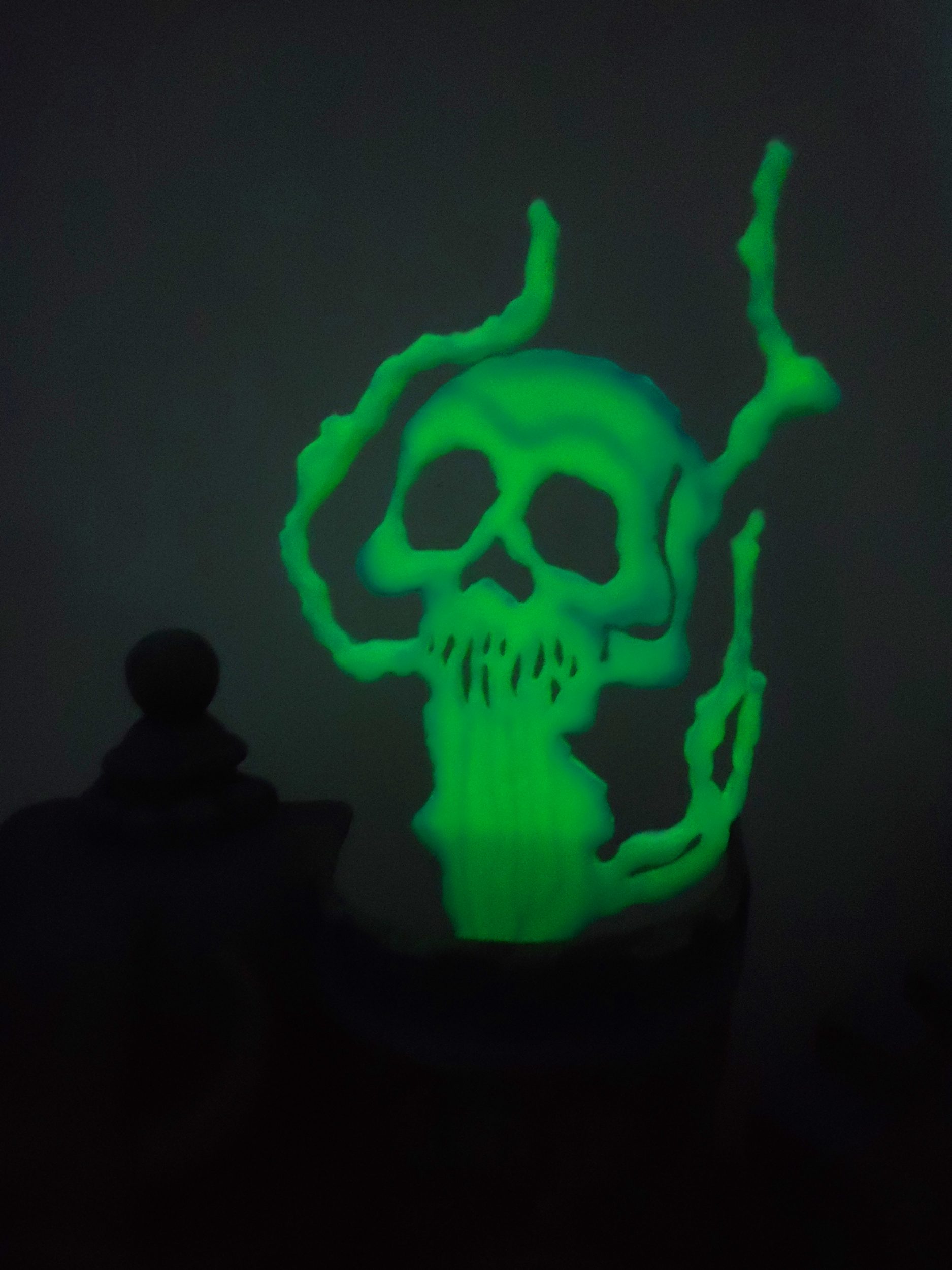

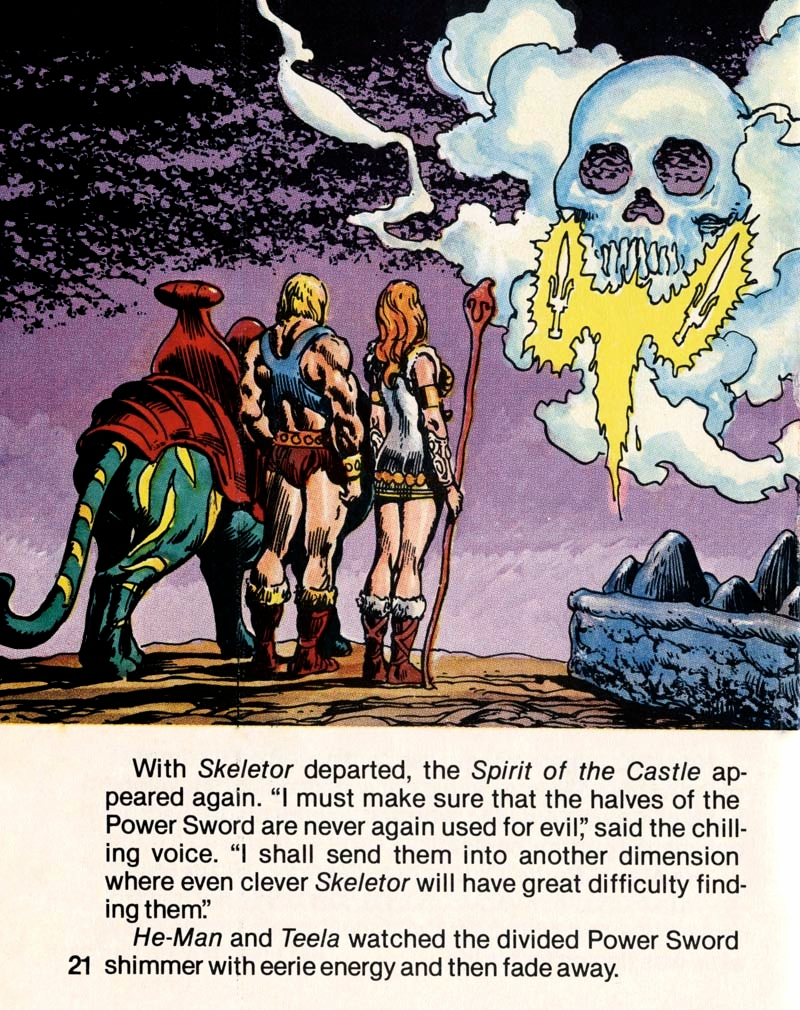
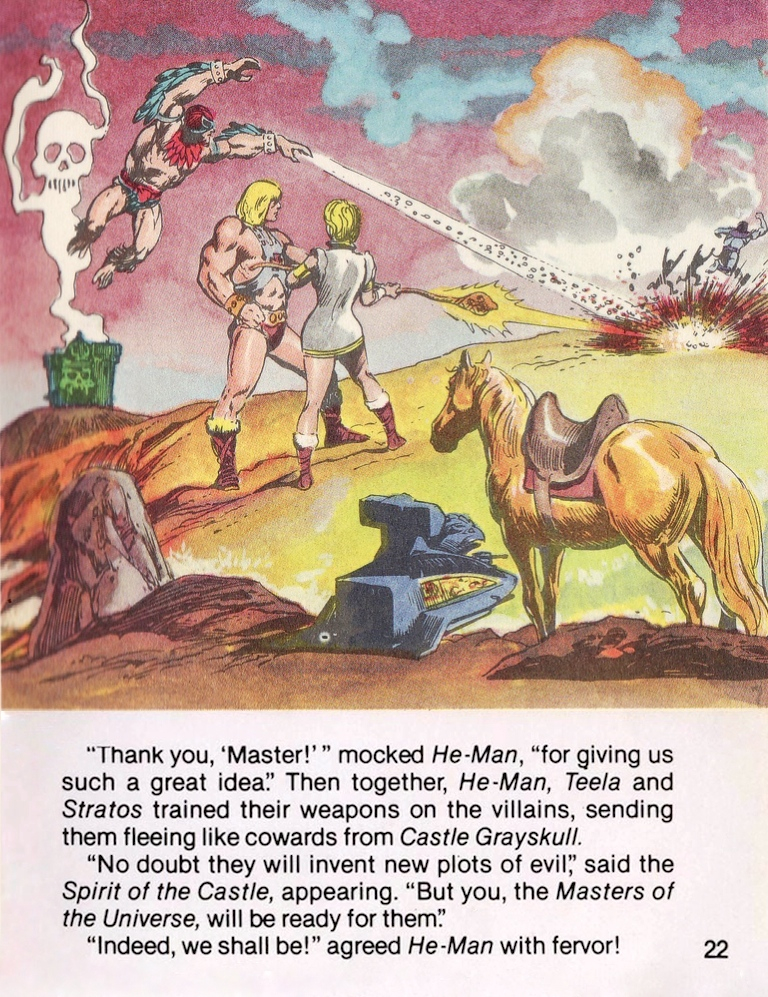
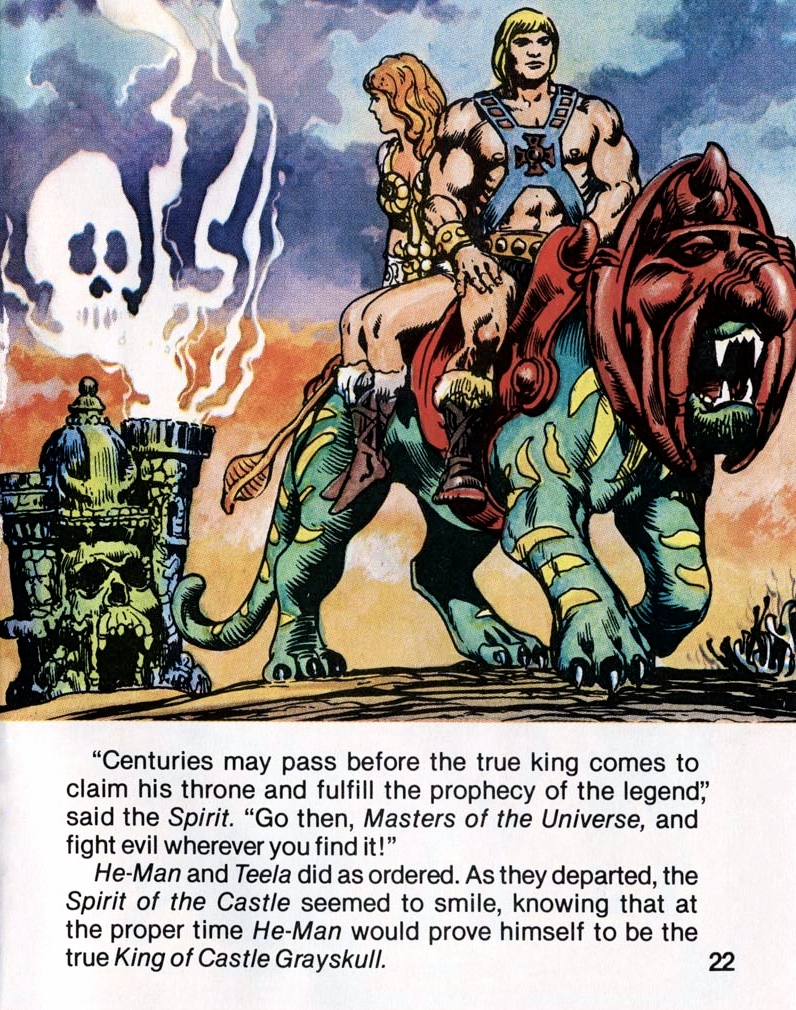
Something that I’m told will be available in future customs is the prototype flag. Guillermo was kind enough to send me the artwork he did for it, so I could print one out and add that to my castle (note – I made a modification on the colors of the evil side of the flag):
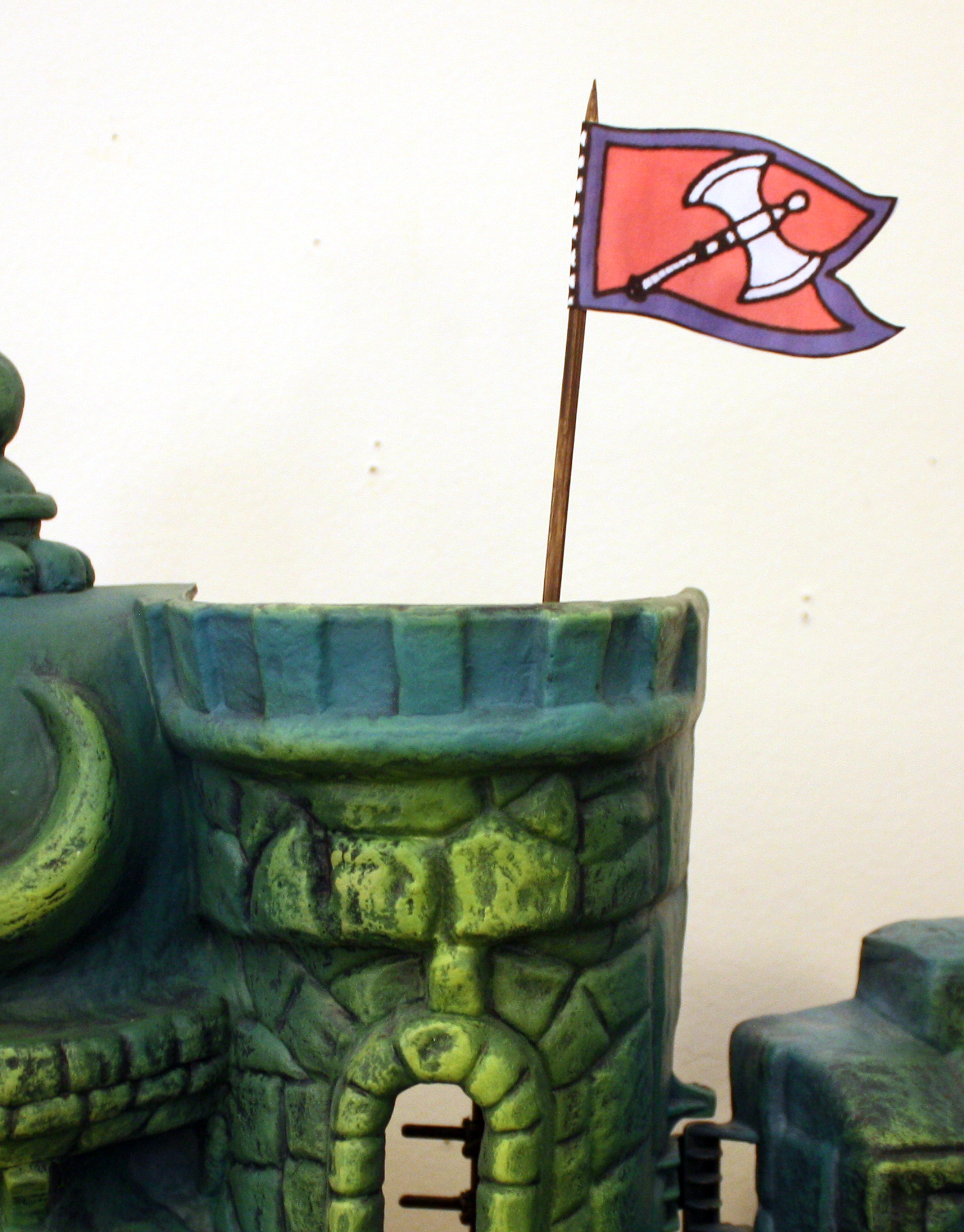

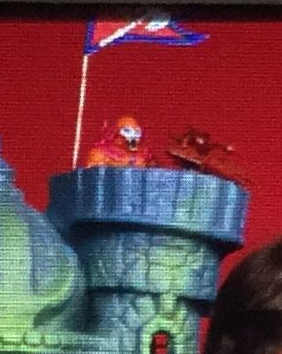
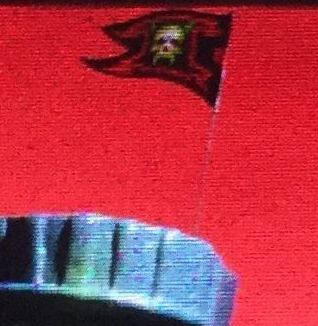
On the exterior of the other half of the castle, there are a few changes as well (other than, of course, the paint). The handle that was added to the retail castle to allow kids to use it as a carrying case has been removed to restore it to the prototype design, and sculpted stone is used to cover up the tops of the battlements.
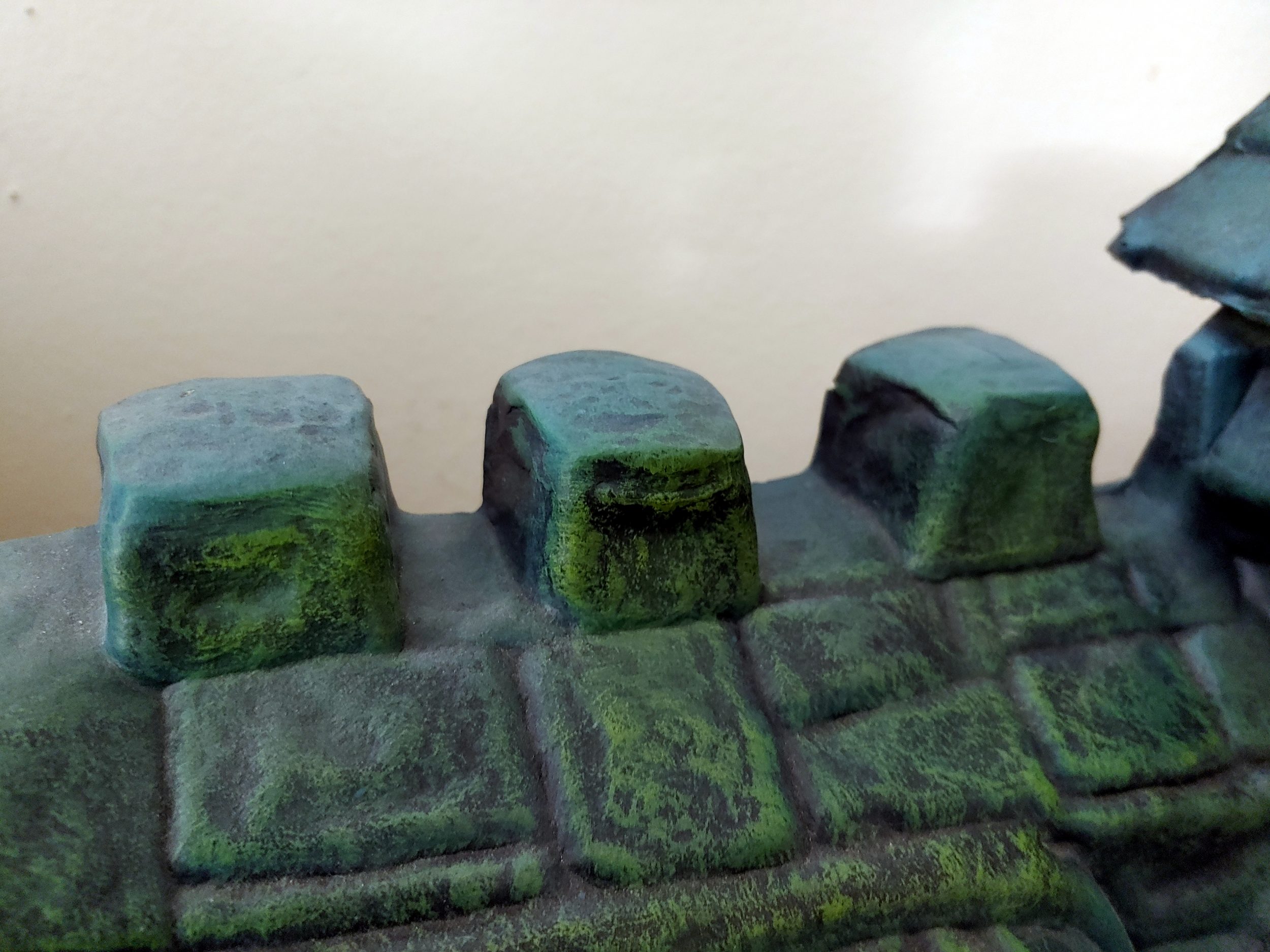
The tower on the far end has had its roof extended to a sharp point, again to match the source material:

And a really fun feature: a secret door has been created under the side windows, which was again a feature of the prototype, but not included in the retail release:

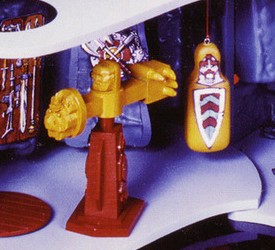
Interior
The second floor pieces of the interior have been given a wood-like finish, and the gargoyle piece at the top of the elevator has been cast in a greenish stone finish. The prototype castle had a circular elevator and a skull at the top, although it was never illustrated in the Alcala comics (it does get referenced in Don Glut’s text). On the right side we see a replica of the computer cardboard cutout that came with the retail castle, but below it is a 3-D piece that recalls the prototype castle:



One of my favorite extras here is a green computer and monitor. It wasn’t in the prototype castle, but it was featured in King of Castle Grayskull:
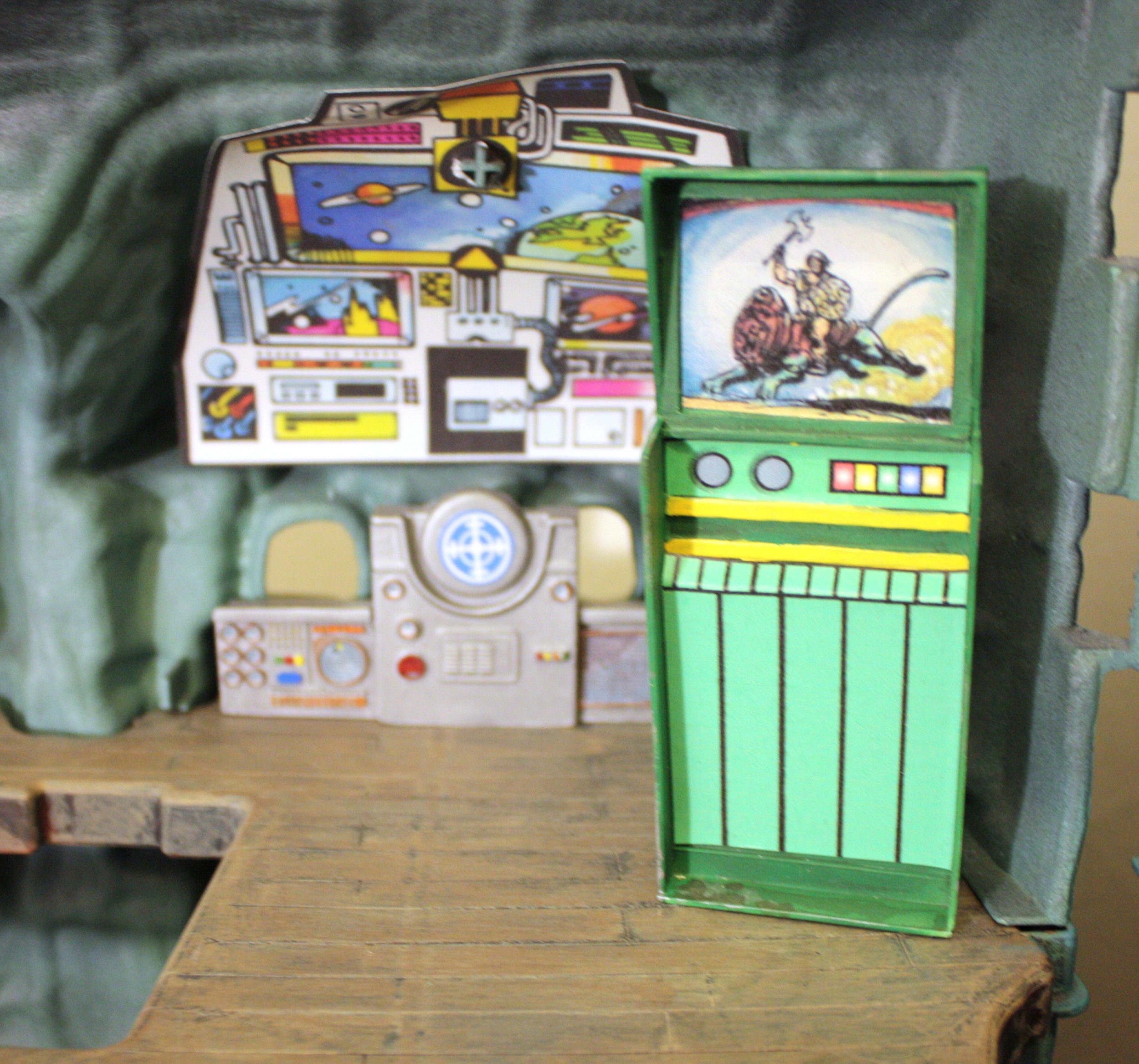
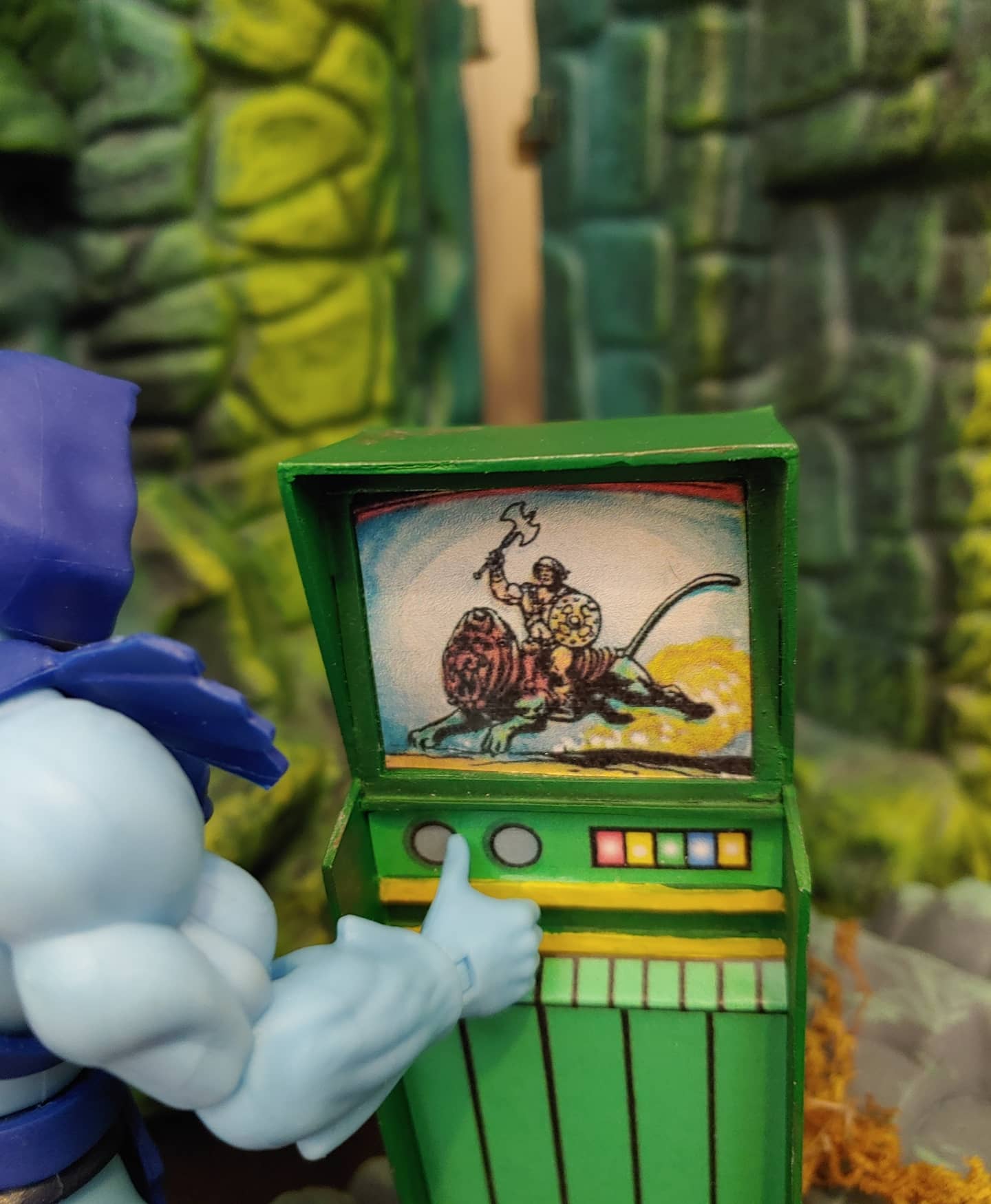
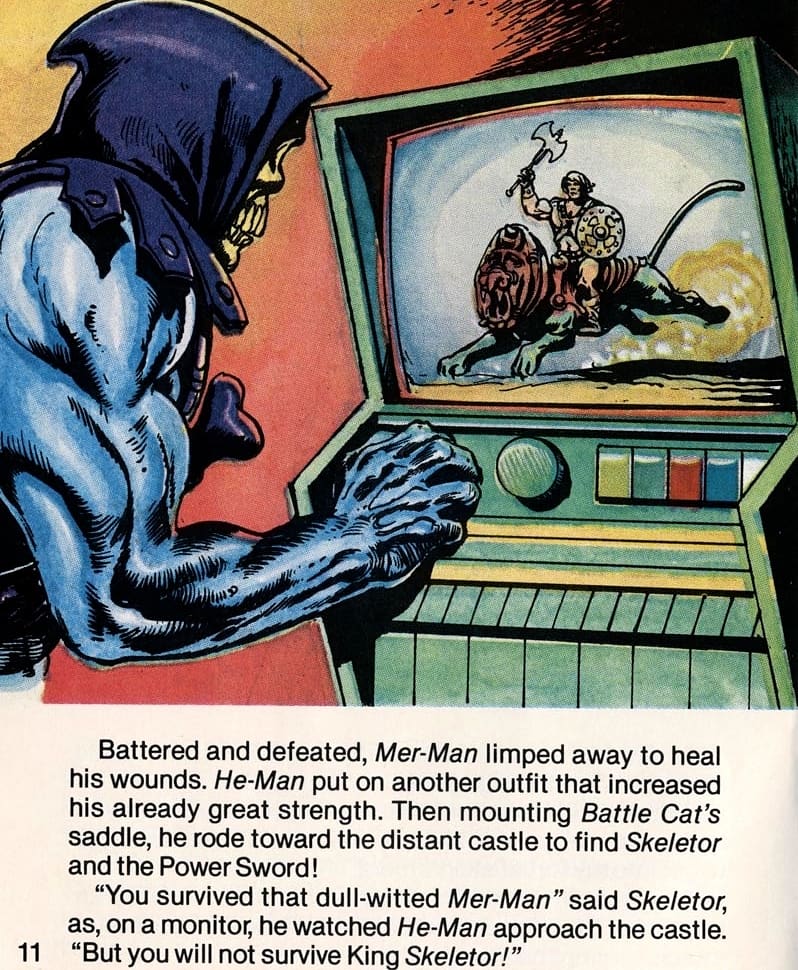
Down below we have a repainted elevator (in red, like the prototype) and a repainted weapons rack. There are also weapons from the retail playset, cast in metal, with wood handles on the spears/poleaxes. Behind you can see that the ground floor is given a stone slab texture.
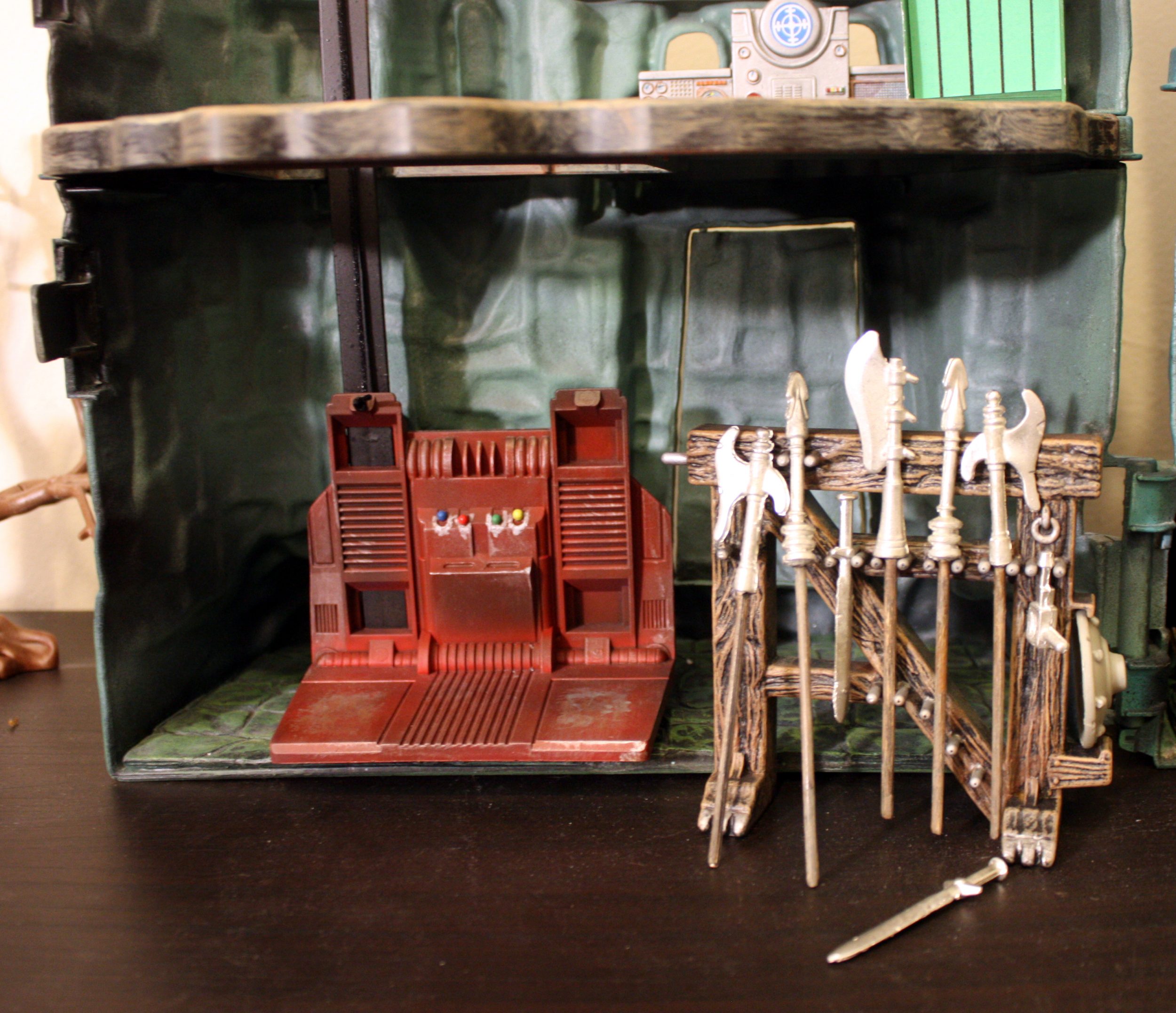
In the throne room, we have several fun goodies. There is a redesigned throne that is based on the prototype. Included is a red blanket or cloak shown in the Alcala comics. There is also a small green computer, from the Alcala comics. The single rail ladder, featured in both prototype and comics is there as well. Guillermo has also created a 3D version of the space suit cardboard cutout, which was a part of both the prototype and retail castle as a 2D printout:
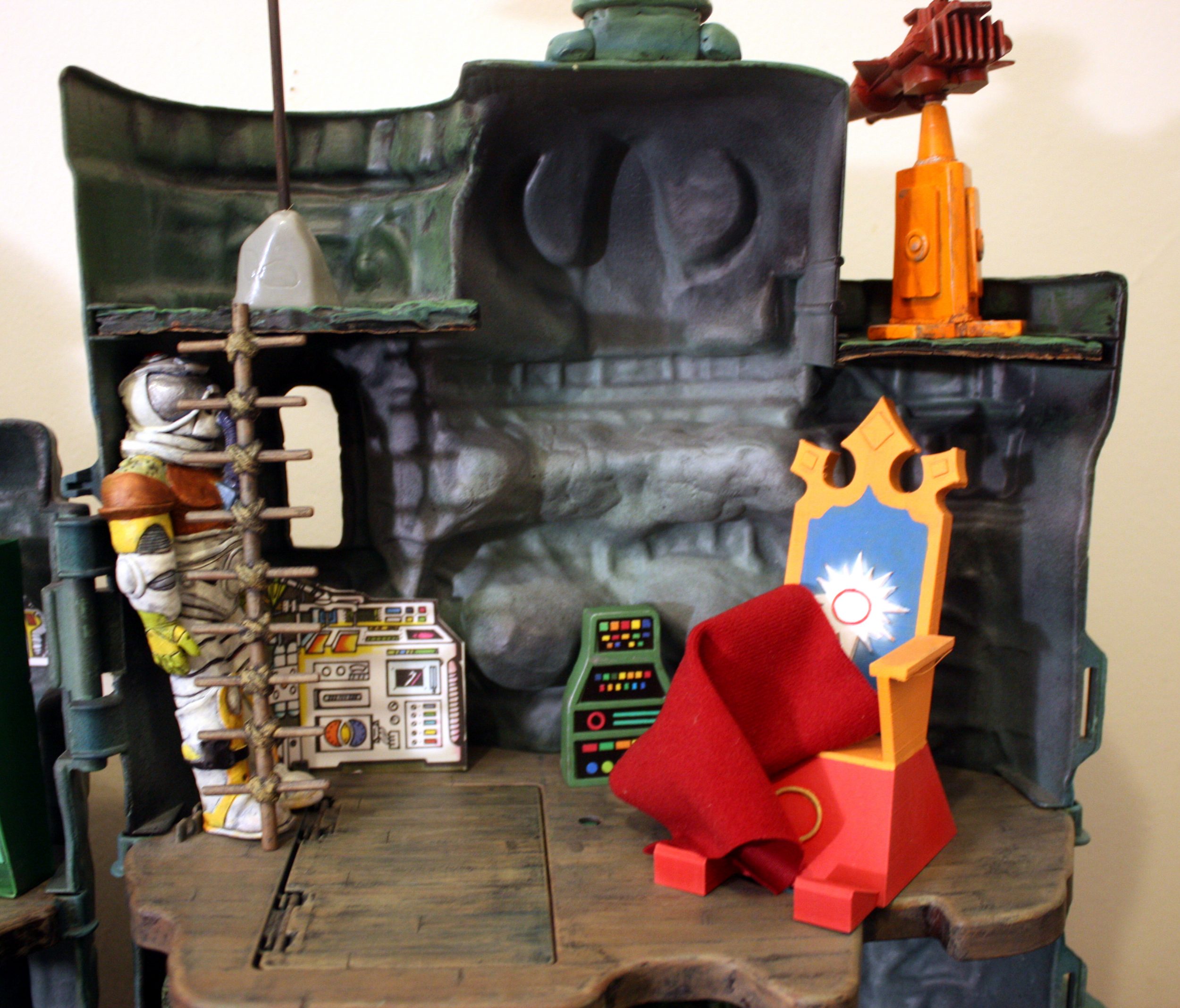


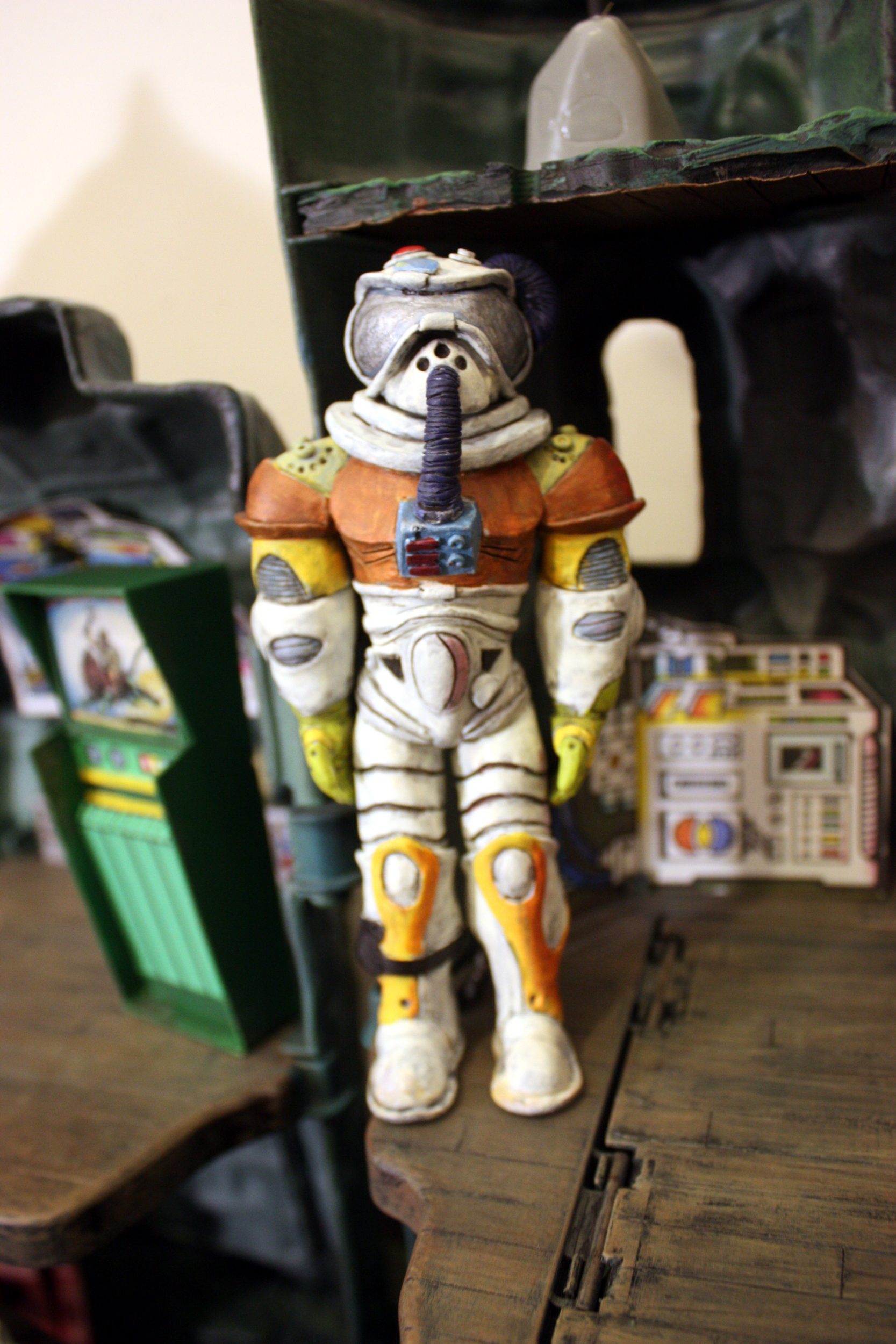
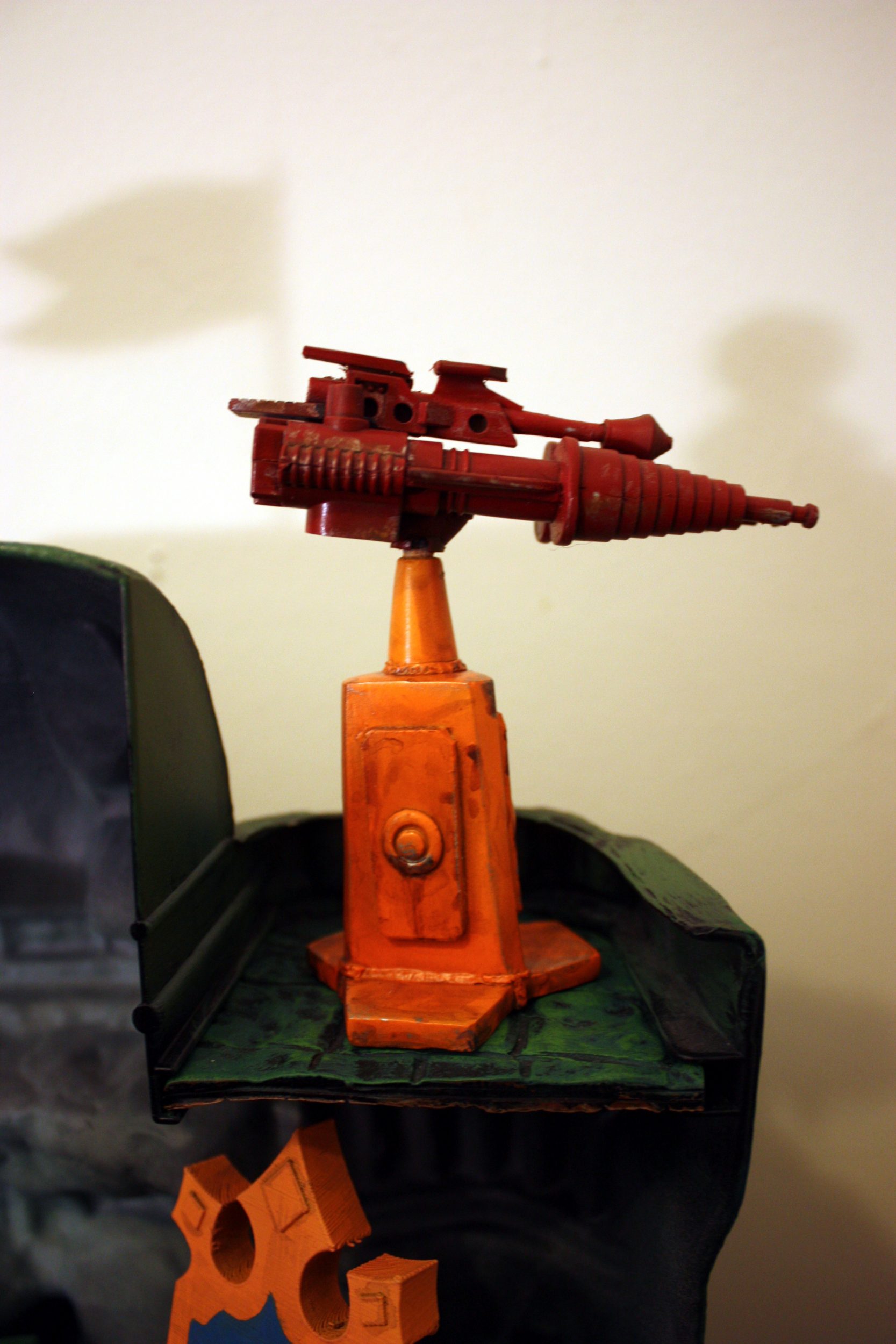
A great feature of Guillermo’s custom is that the trap door works just like the vintage castle!

On interior of the front entrance, we have a few more goodies. To the left of the jawbridge, we see the dungeon. The prototype didn’t have walls and a door like this, but it was illustrated in the Alcala comics:

The door to the dungeon opens on a hinge. Inside is a poor unfortunate victim who was left there too long. The dungeon is removable. On the back wall are a set of shackles, which were featured in the prototype:
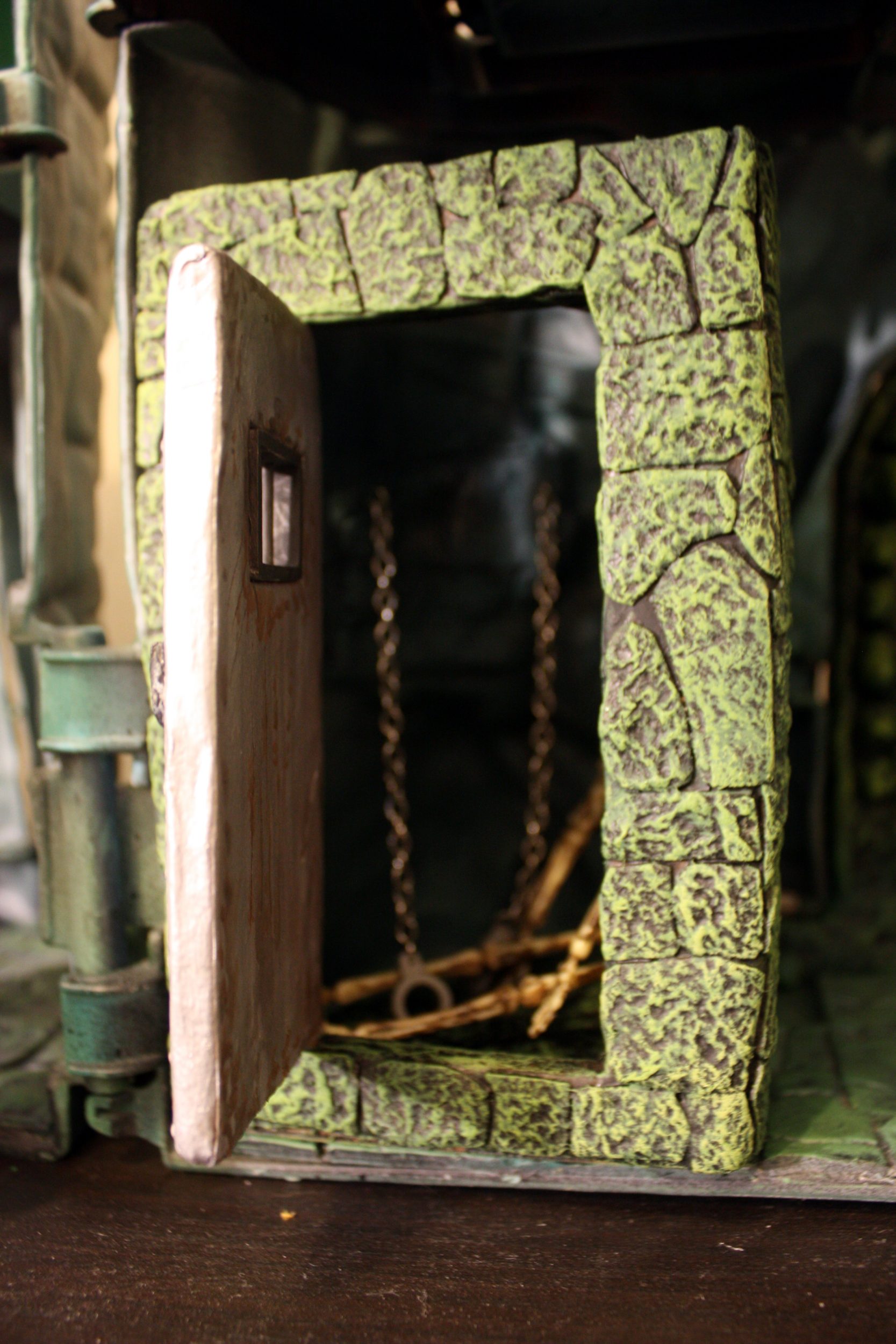
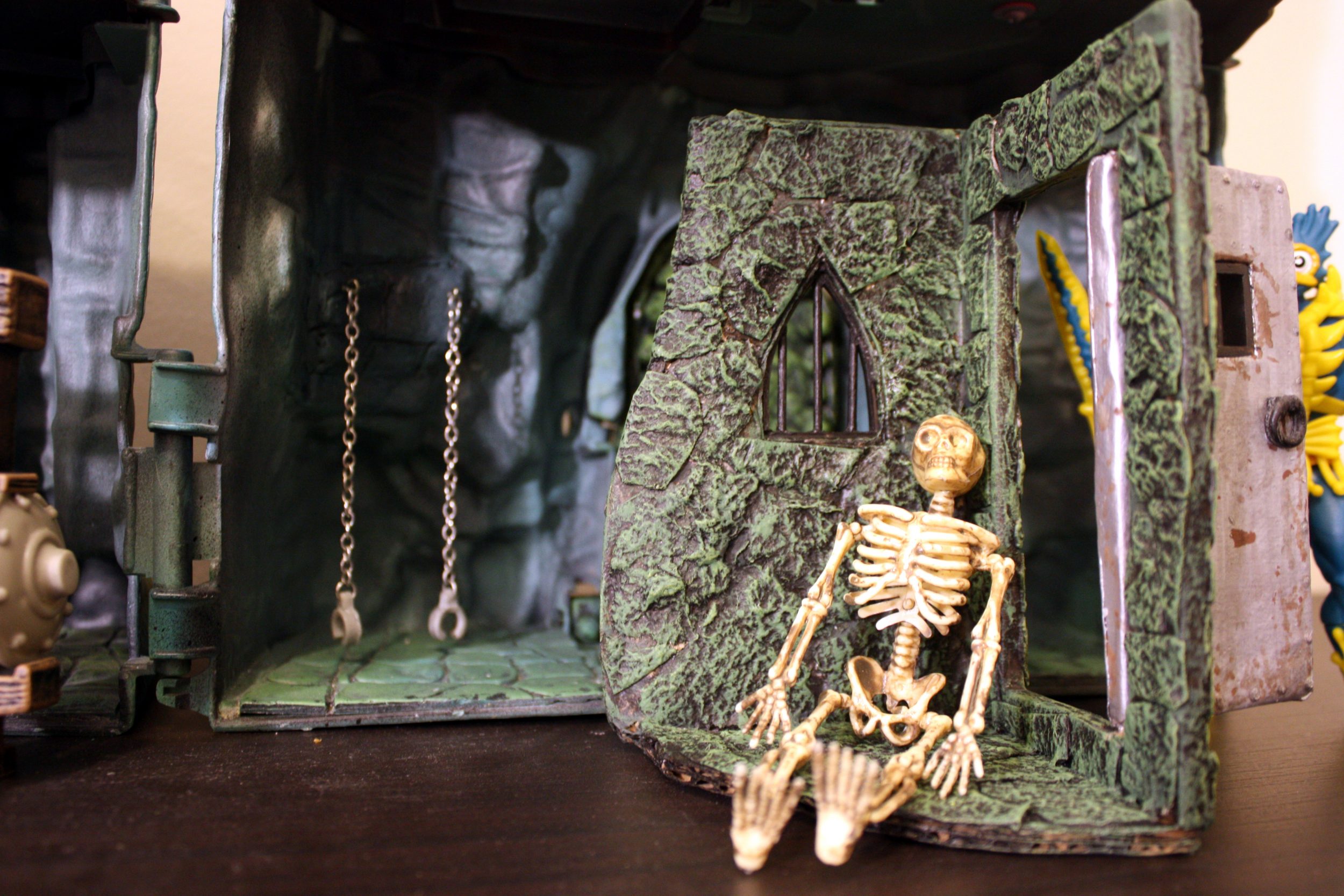

And that’s the castle! Guillermo has been constantly coming up with new additions and innovations to his designs, so I’m sure his creations will continue to evolve. Some possible extras I might suggest in the future: the prototype combat trainer, jetpack, bop bag and torture rack. The round elevator might be fun too, although that might difficult to engineer. In any case, this is the Castle Grayskull I’ve always wanted and I’m absolutely thrilled to have it in my collection!
Guillermo is accepting commissions – if you’re interested in custom work, you can reach out to him via his Instagram account.
